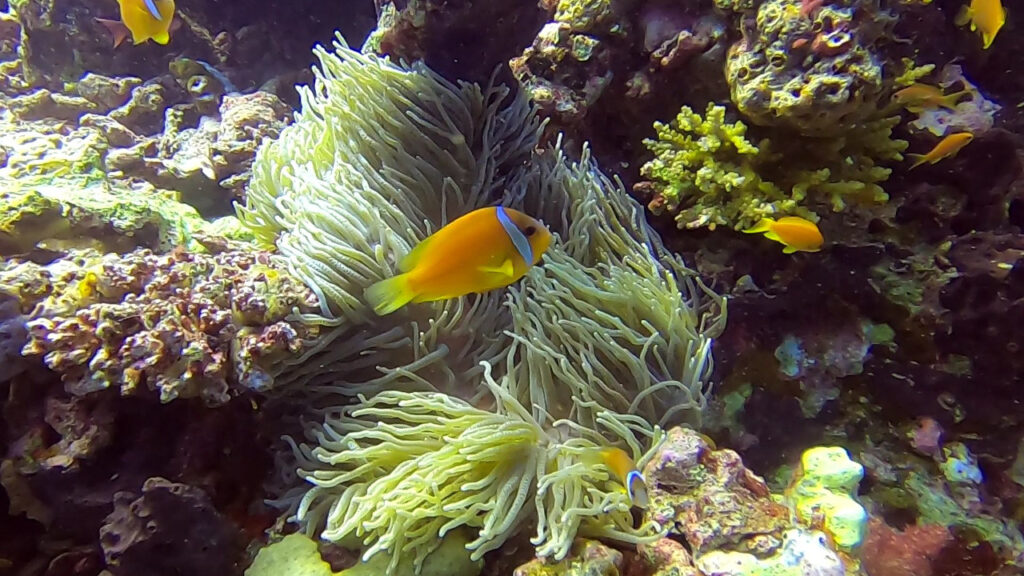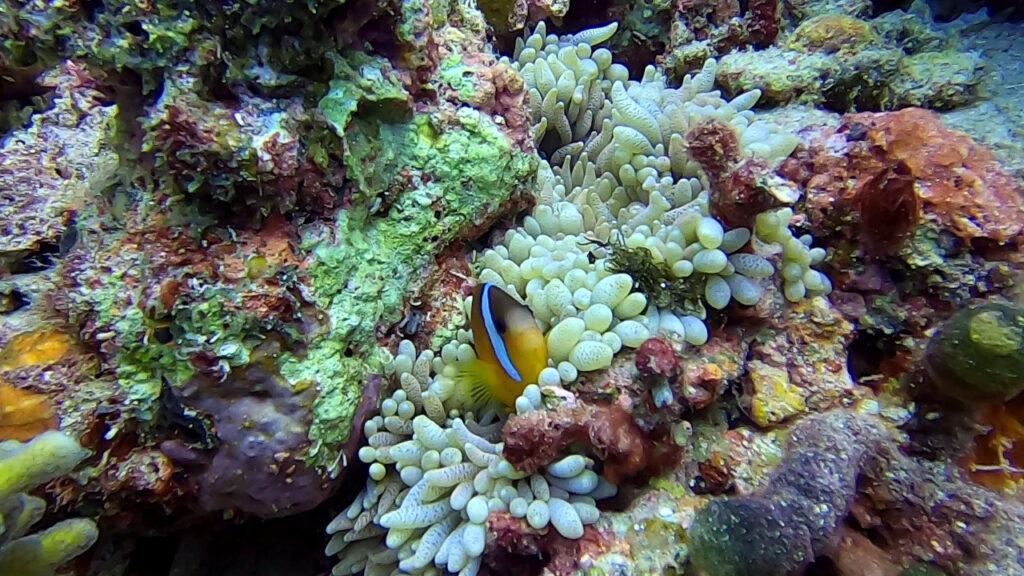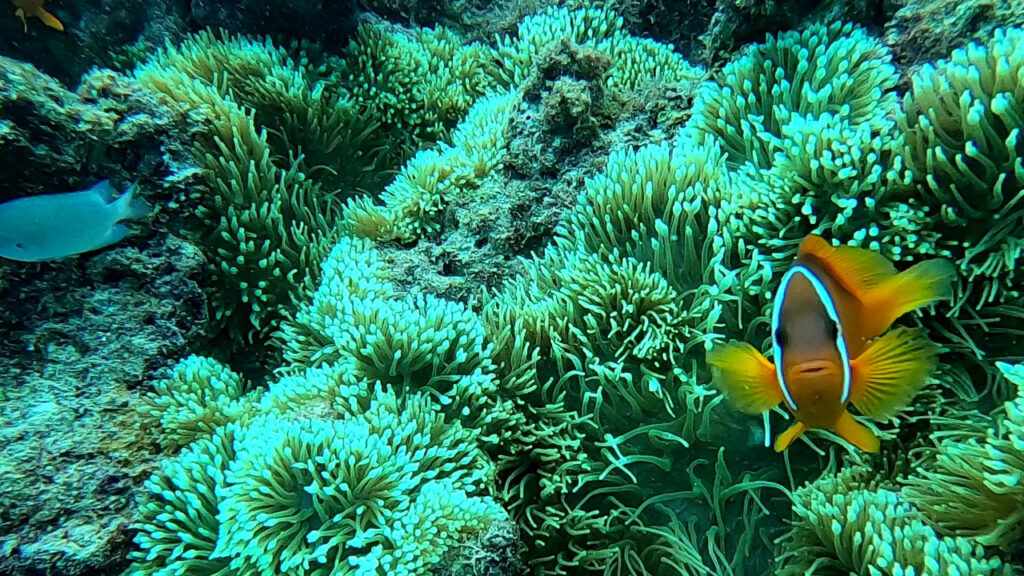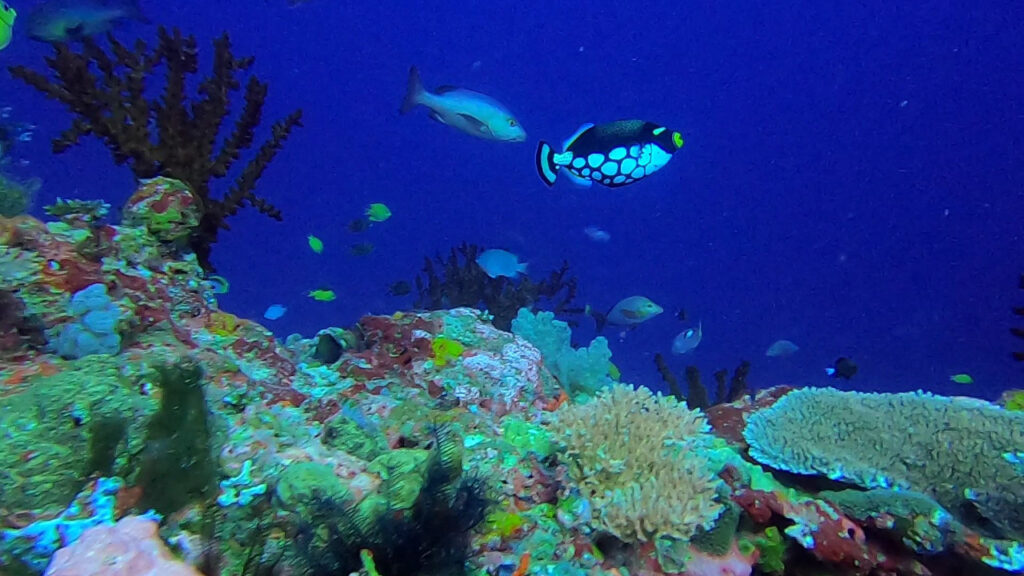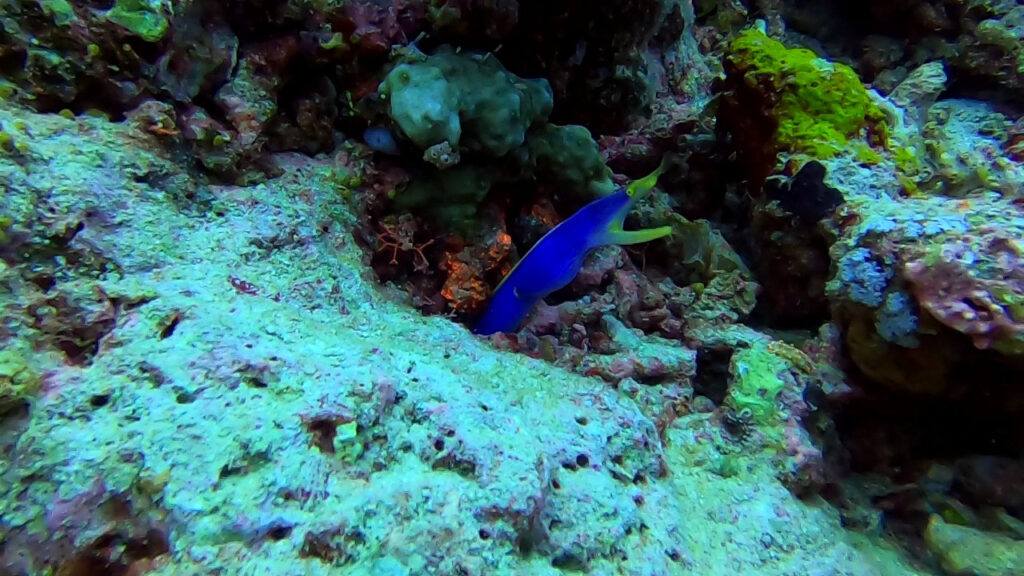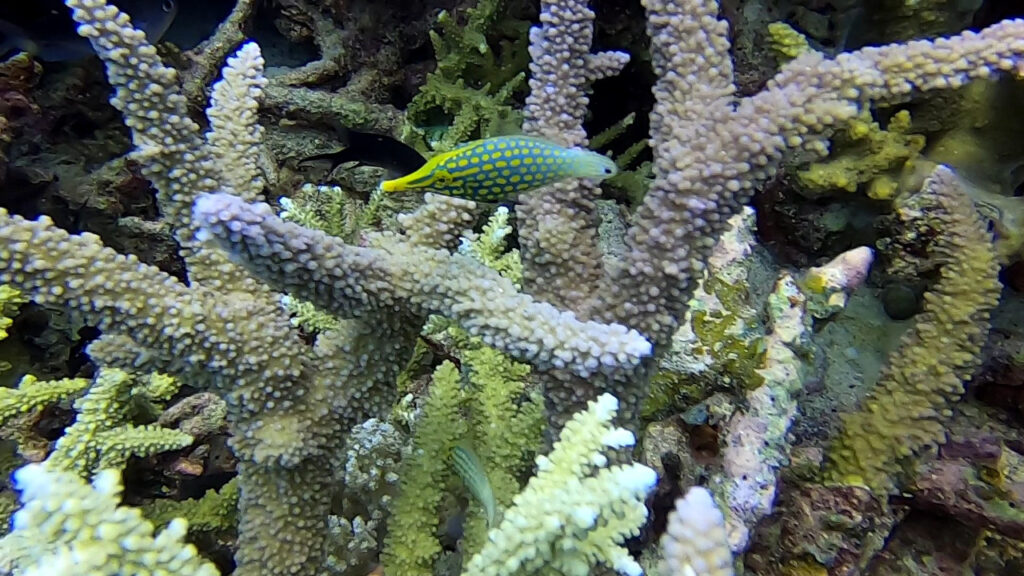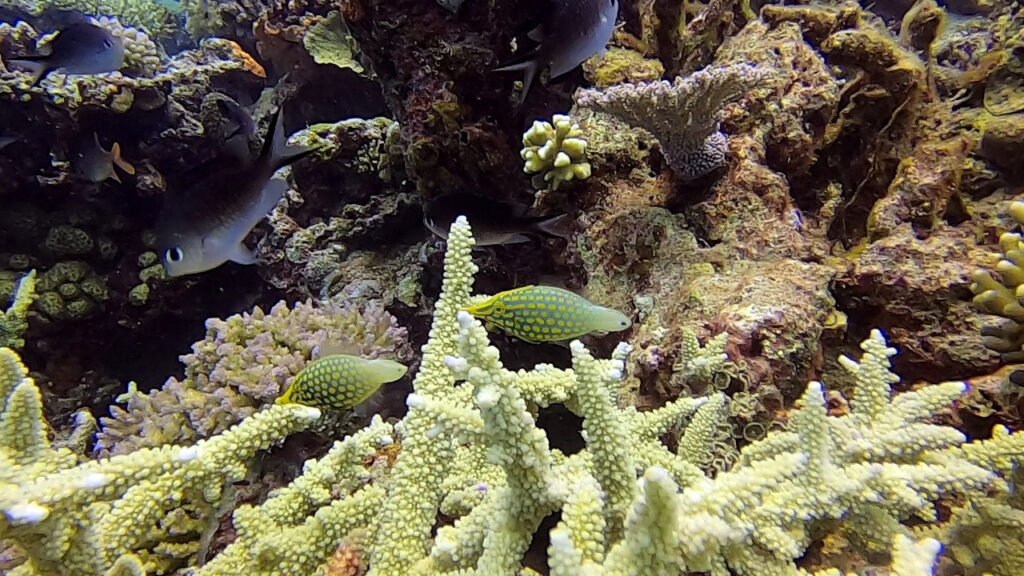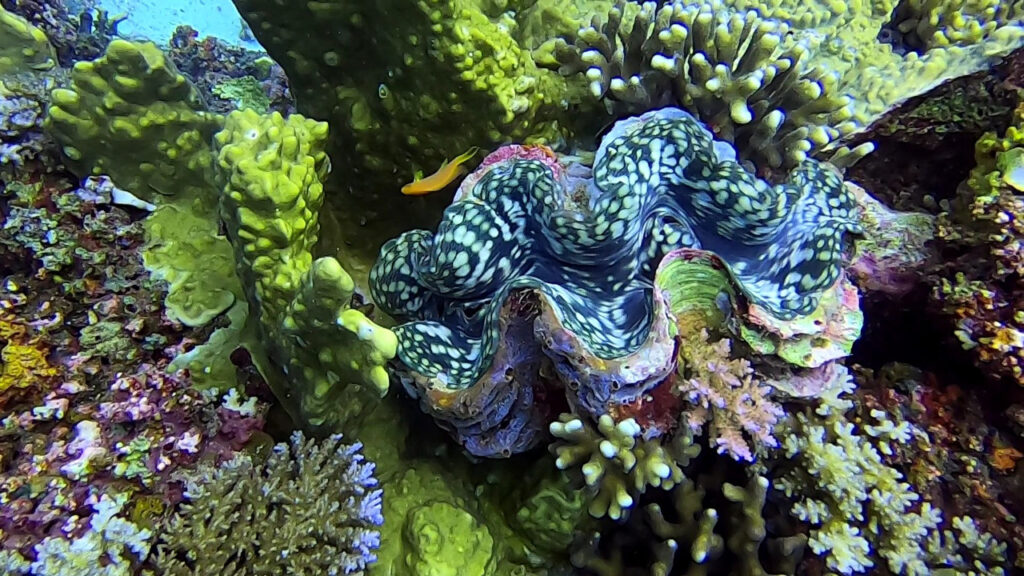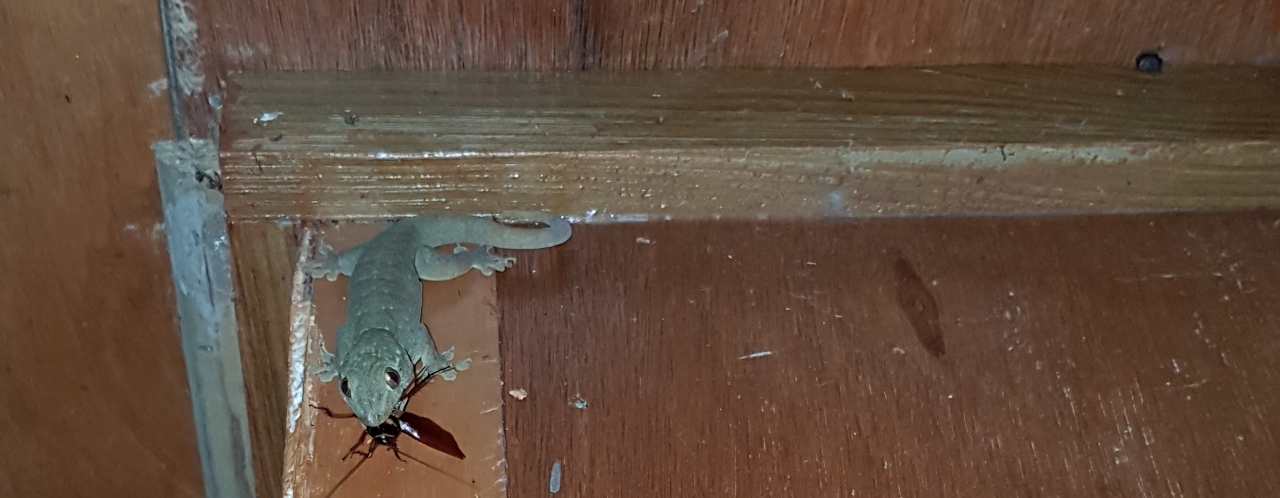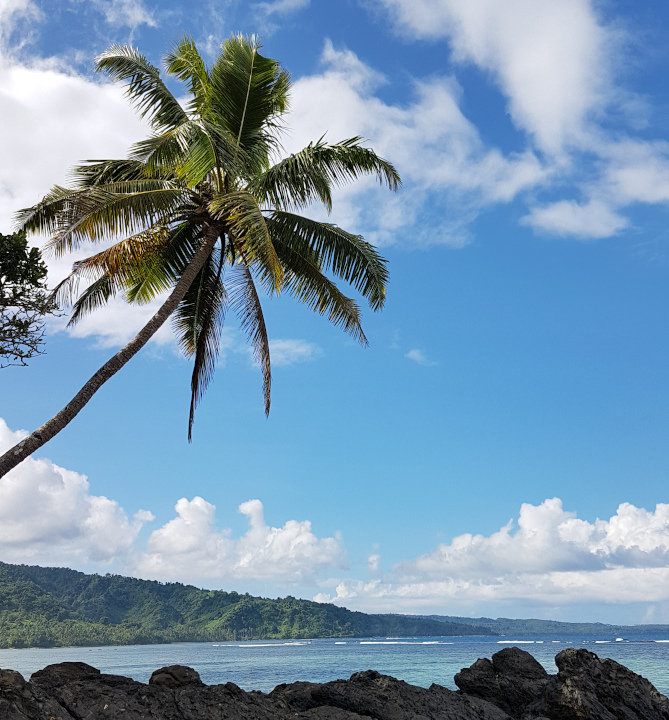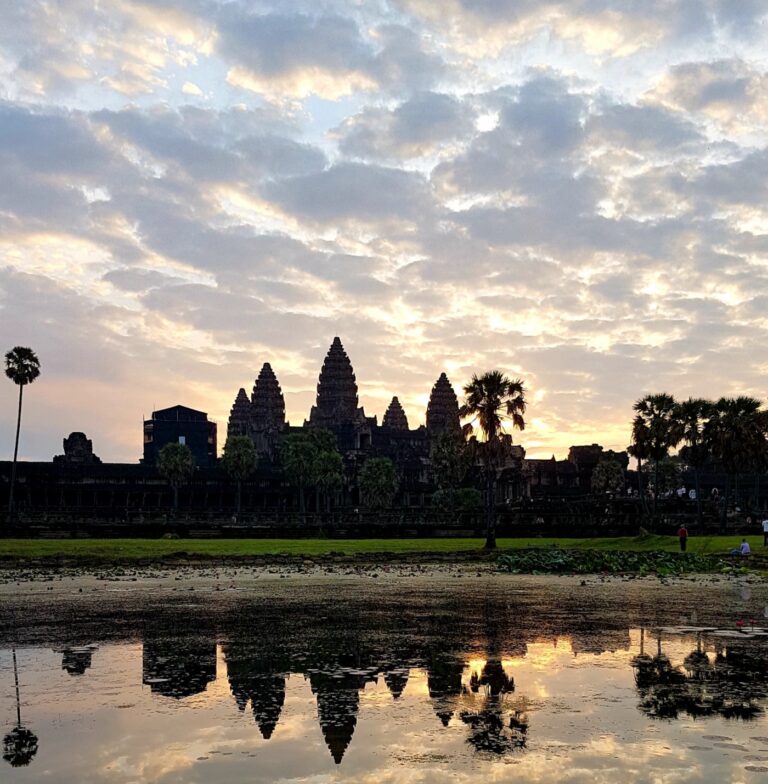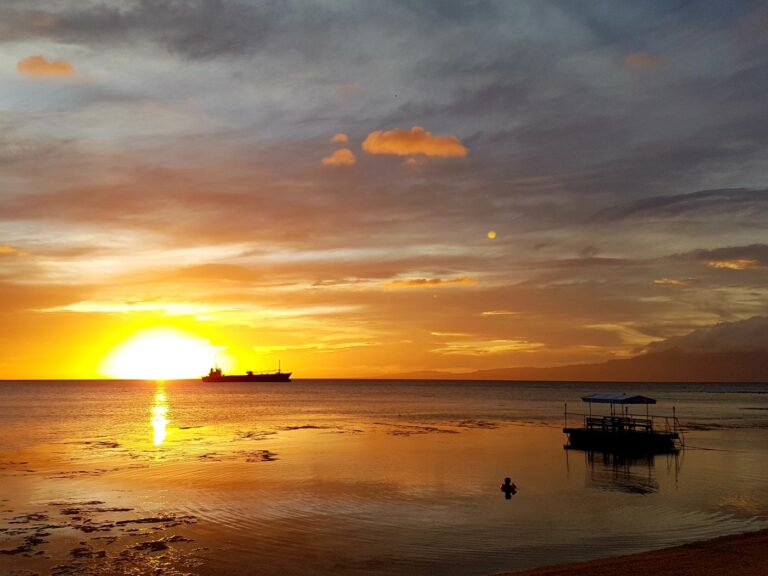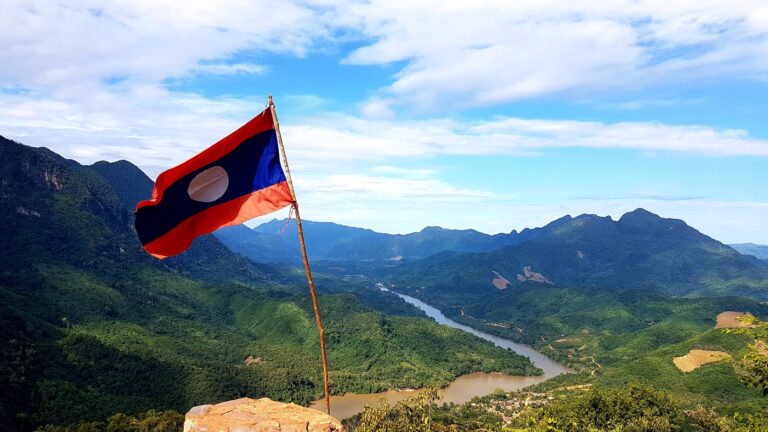Bula! Fiji is a beautiful Pacific island archipelago with kind, helpful, friendly people. And it is a place where it is difficult to get much done — though, not in a bad way at all! So, hang in, slow down, and enjoy fijitime!
(The present account of our travels dates back to February – March 2020, you know, just before covid hit the Pacific… Prices and timetables may have become outdated.)
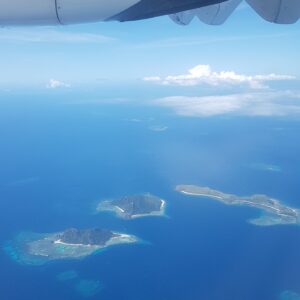
Our itinerary
We landed in Nadi. From there we took a bus to Pacific Harbor where we spent a few days, during which we went on some dives — with sharks! We then moved on to Suva to catch the ferry to Taveuni. There, we stayed a week before taking the ferry back to Suva.
On Taveuni, we went diving (Rainbow Reef), snorkeling, and explored the island itself.
Once back in Suva, we immediately dashed to Nadi by mini bus. From there we went to the Mamanuca and Yasawa islands: Mana island (plus a day trip to the “Castaway” island Monuriki), Waya Lailai, and Nanuya Lailai.
The boat trips to Mana and Waya Lailai were organized by private boats of the hostel and host family, respectively. From there to Nanyua Lailai and eventually back to Nadi we took the Yasawa Sea Bus.
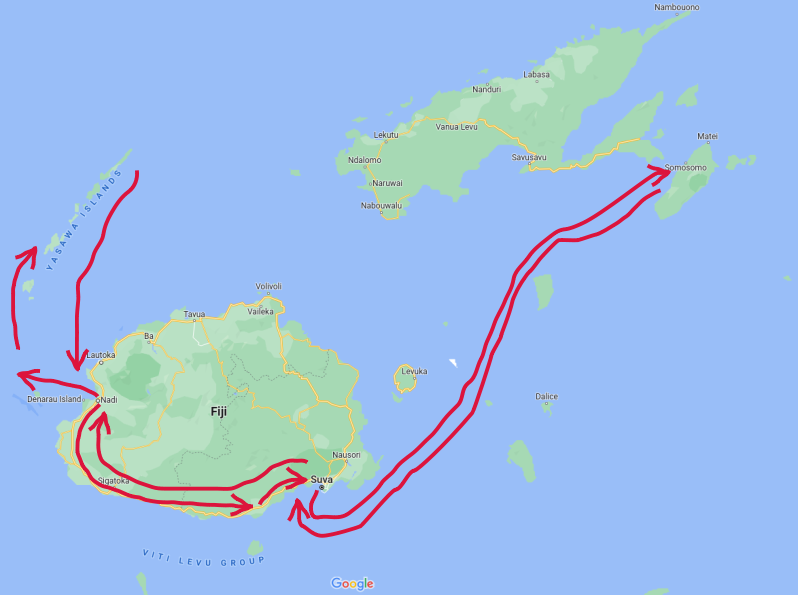
Scuba diving and snorkeling in Fiji
Awesome! Seriously, there is not much more to say.
Well, of course, I nonetheless do say more; though, photos talk even more. We were mostly excited about two aspects of diving that we haven’t seen elsewhere so far: sharks, and soft corals.
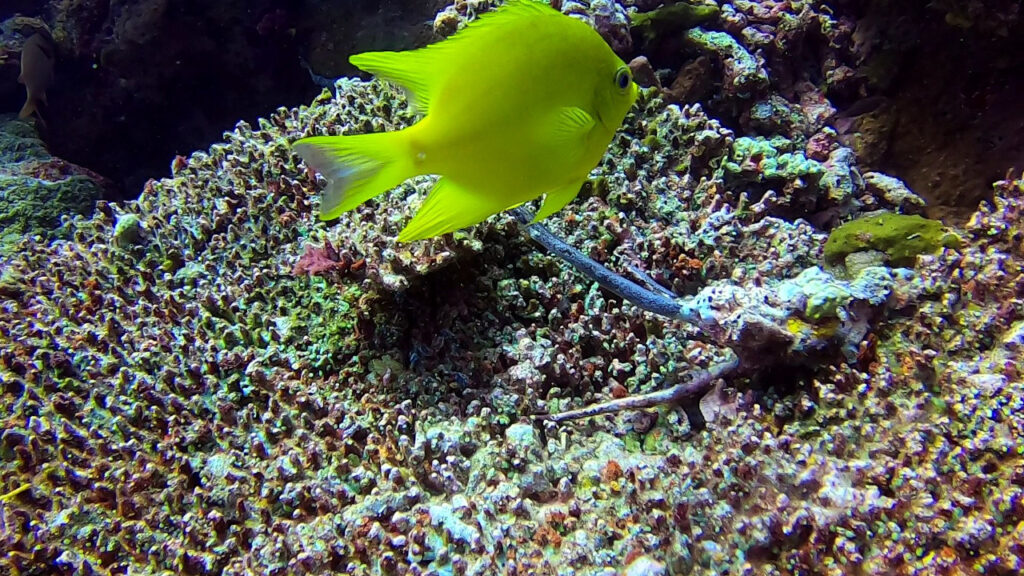
Coral reefs
The Rainbow Reef in the Somosomo strait between Taveuni and Vanua Levu is said to be the soft corals capital of the world. This is because the strait represents a special topography.
You see, as the tide goes in and out over the day, there is a lot of water that gets funneled through the narrow strait between Taveuni and Vanua Levu. This results in a decent current — and with the current, there come the nutrients the soft corals need to survive.
The soft corals are soft in the sense that they have no rigid parts which would provide them with some independent three dimensional structure. During the time the tide is changing direction — i.e. during the time when there is no noticeable current — the soft corals aren’t out. They’re just a flat blob of color on the reef.
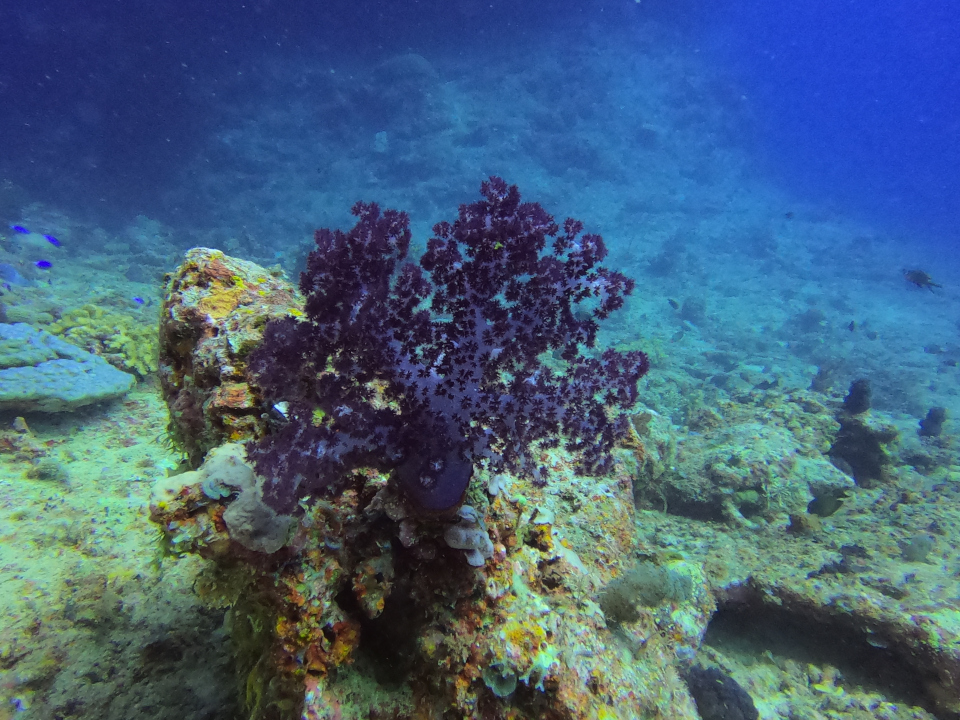
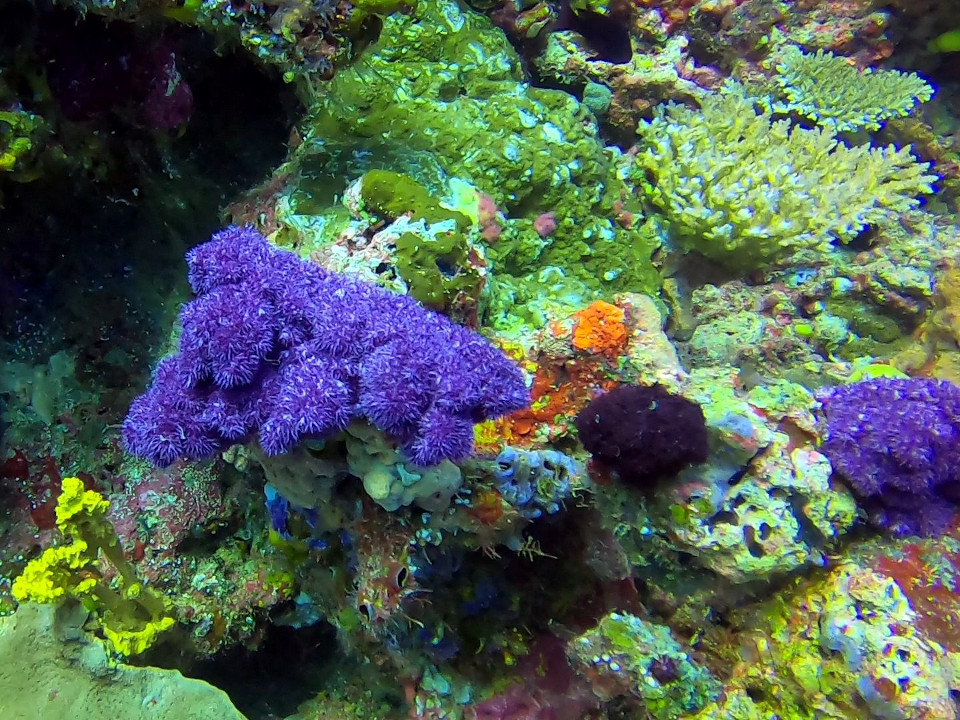
But even beyond the soft corals, the Rainbow Reef is home to so many colors and fish, it’s an absolute joy diving there.
The colorful hard corals right off the beaches all around the island are an argument to visit Taveuni for snorkeling alone. The beaches on the west side face the rainbow reef, with the favorable topography described above. But even the corals on the east coast (e.g. out from Lavena) are plentiful. We were surprised by the beauty of the east cost corals that we wished we would have had some extra days.
Apart from Taveuni we also went snorkeling in the Mamanuca and Yasawa islands. There, the underwater world is also great … albeit with fewer corals than around Taveuni. On the other hand, there is another issue with those islands: the best spot to go snorkeling is at the edge of the lagoon. this line where the waves break, is where the corals grow; and where there are the corals, there are the fish.
Off the beach of Lavena, the lagoon goes only a few meters. Depending on the tide it’s difficult to get out of (or get back into) the lagoon. But at least the border is reachable with a short swim. The lagoon around Mana island is so far out (~1km), you’ll need to hire a boat to reach interesting snorkeling spots. Same applies for the Yasawas.
This being said, the snorkeling is great. We’ve seen sharks, turtles, stingrays, eagle rays, and even an octopus hiding in a hole (“Really, you’ve seen an octopus? They’re delicious! Why didn’t you catch it, that would have been a perfect dinner!” — the reaction of one of the host families).
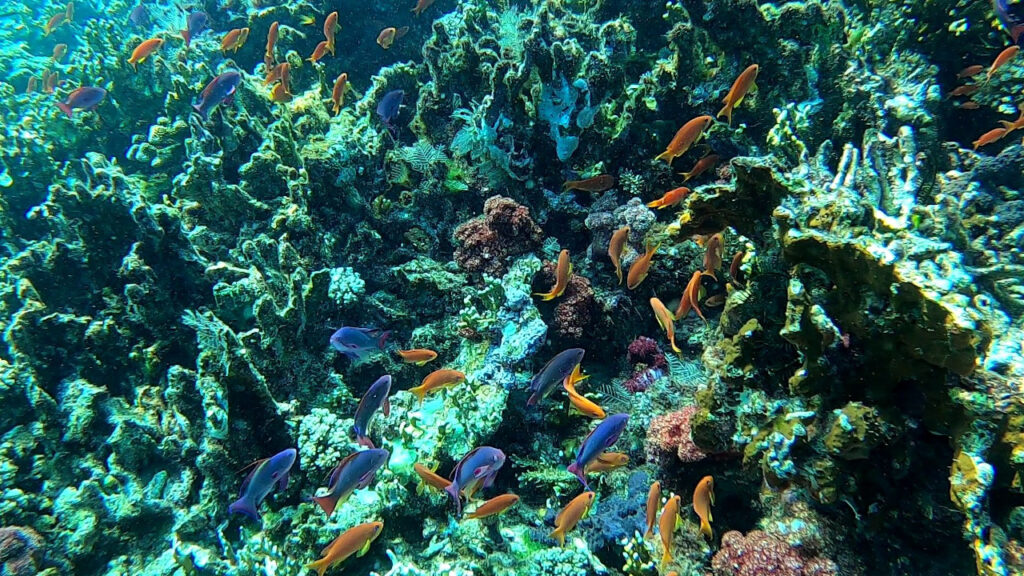
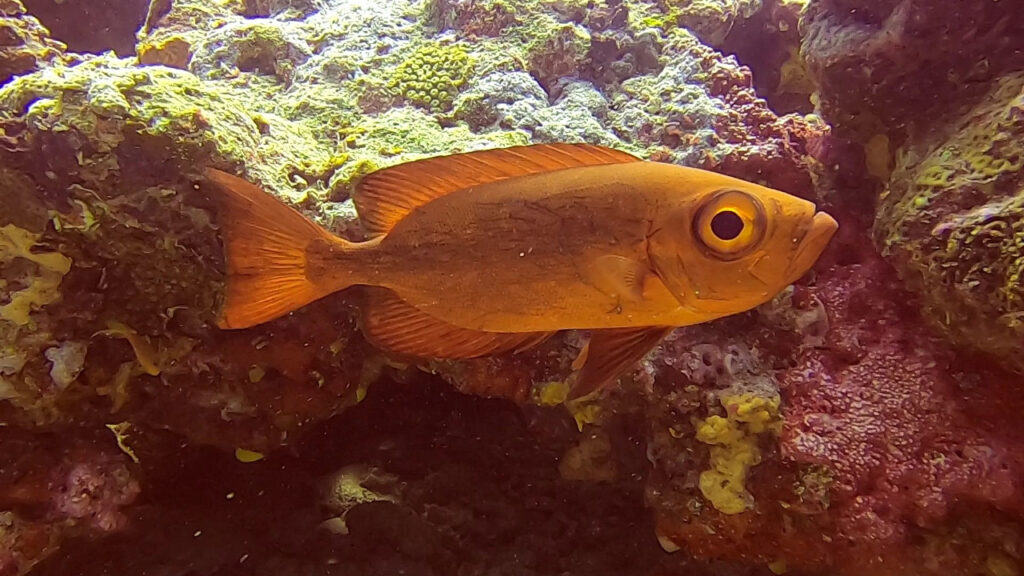
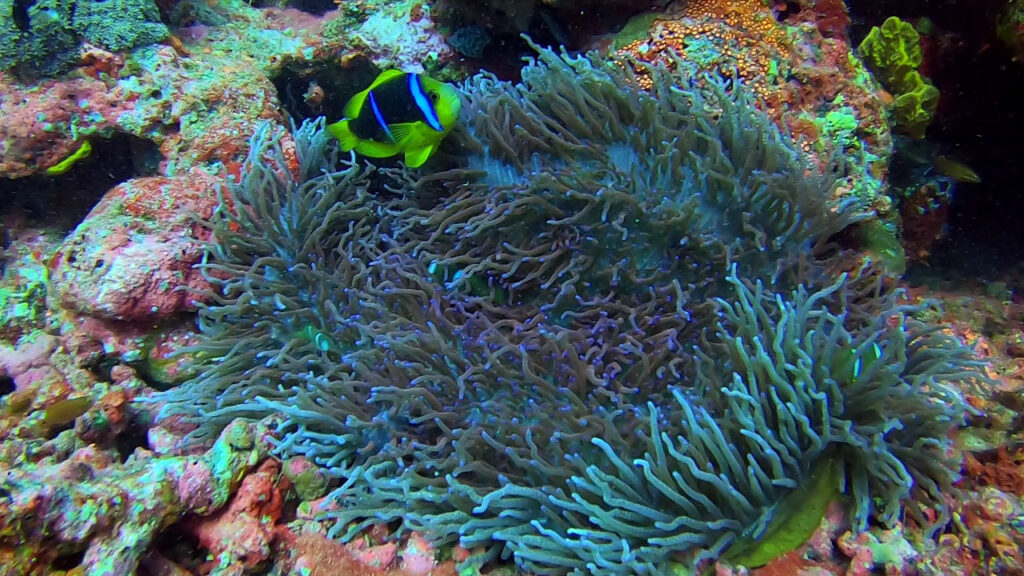
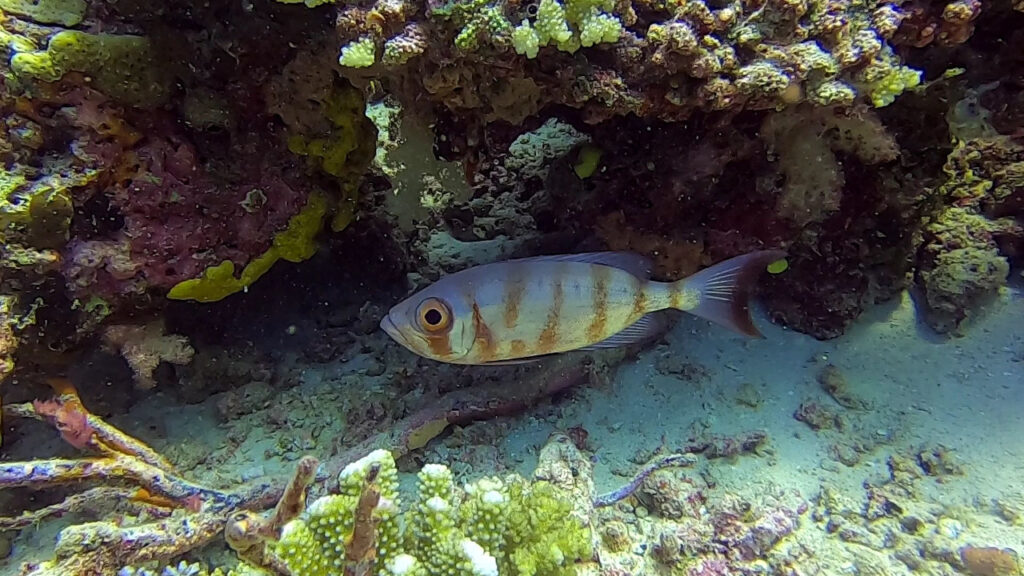
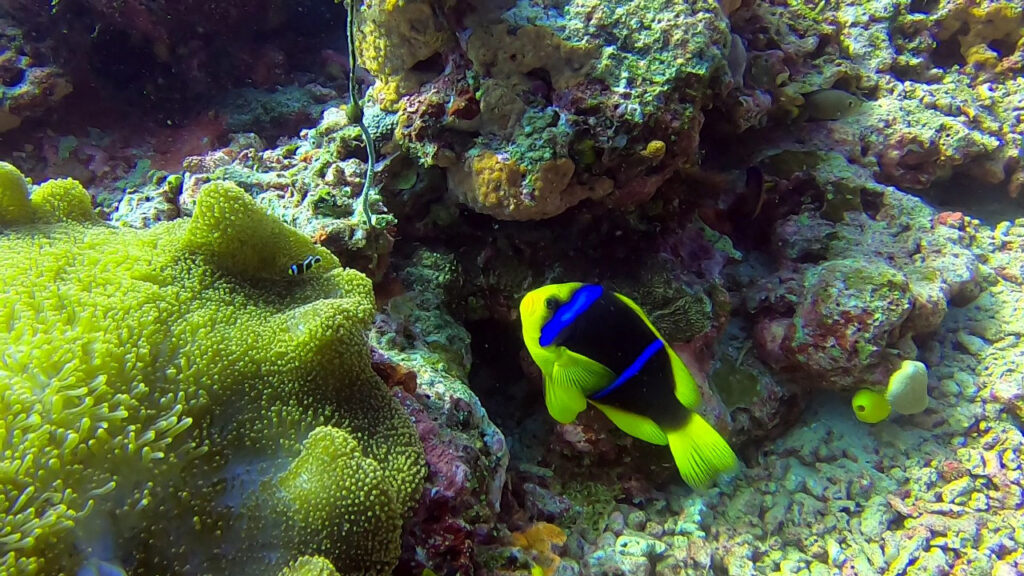
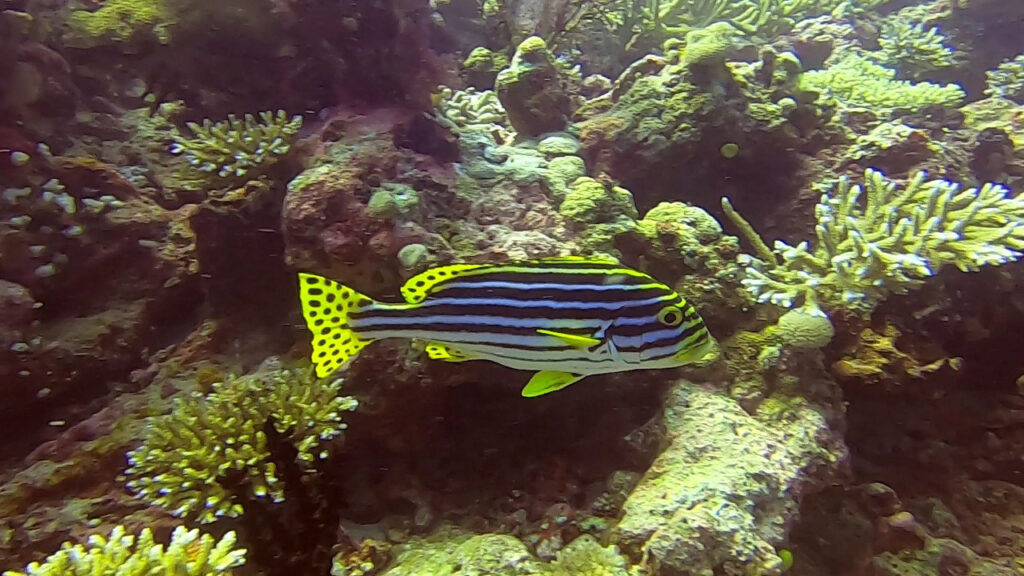
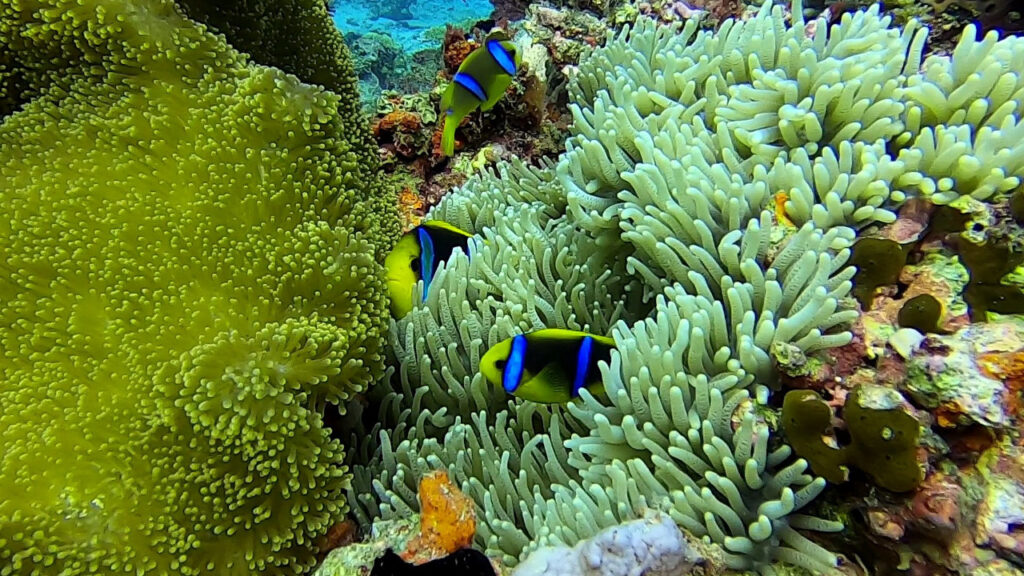
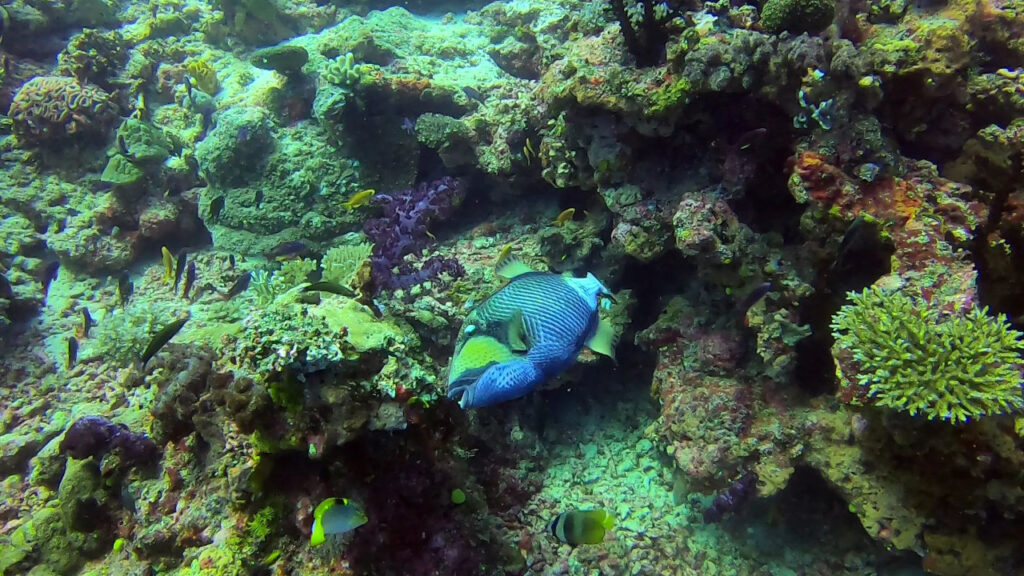
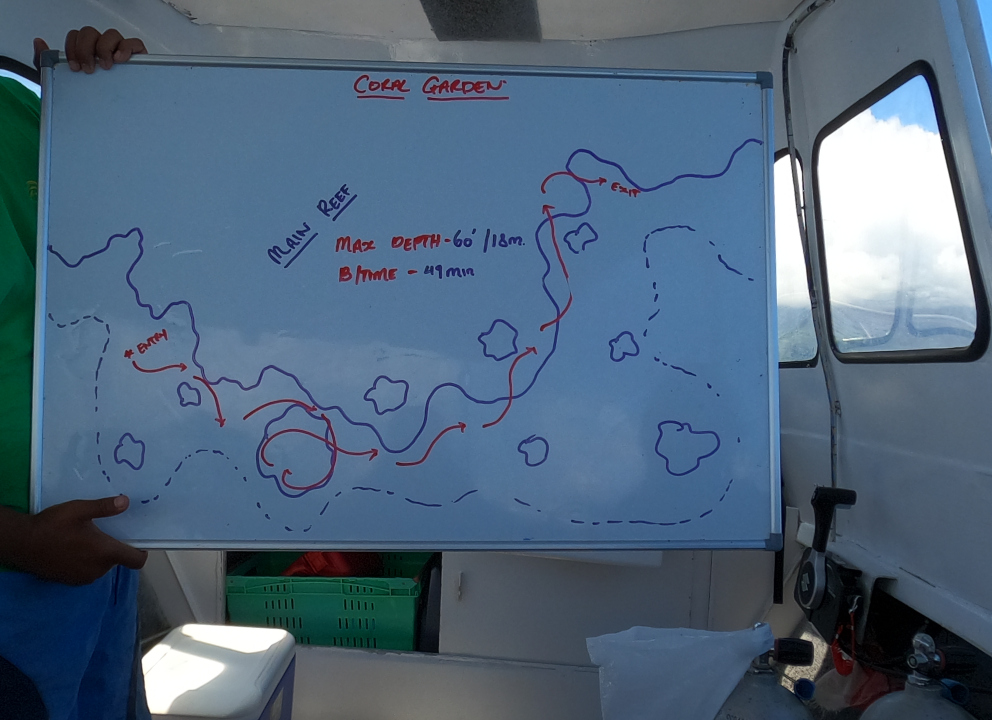
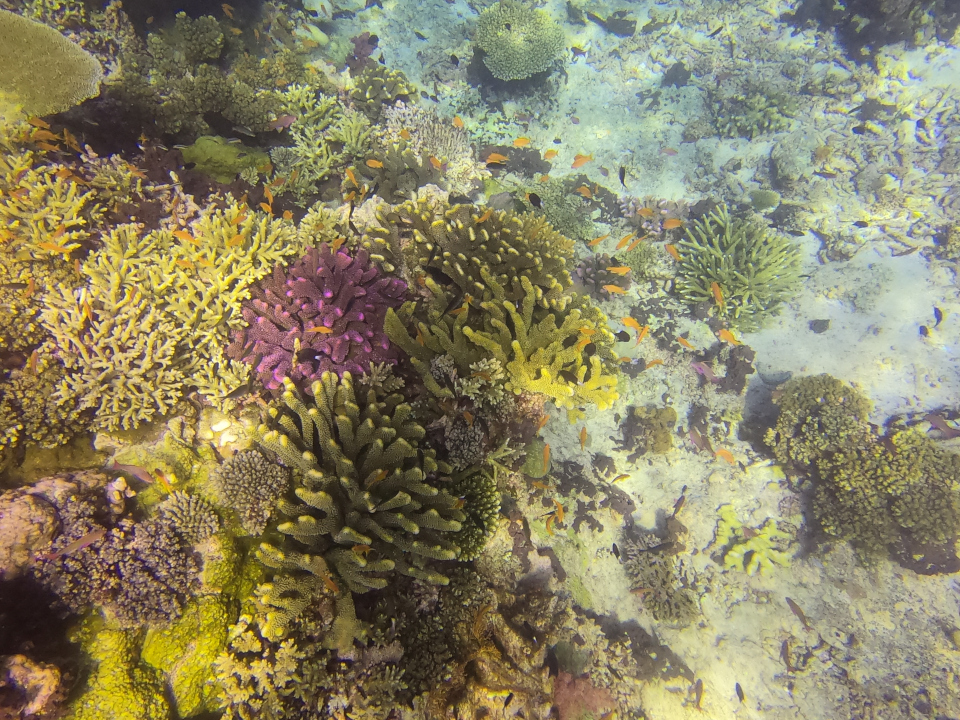
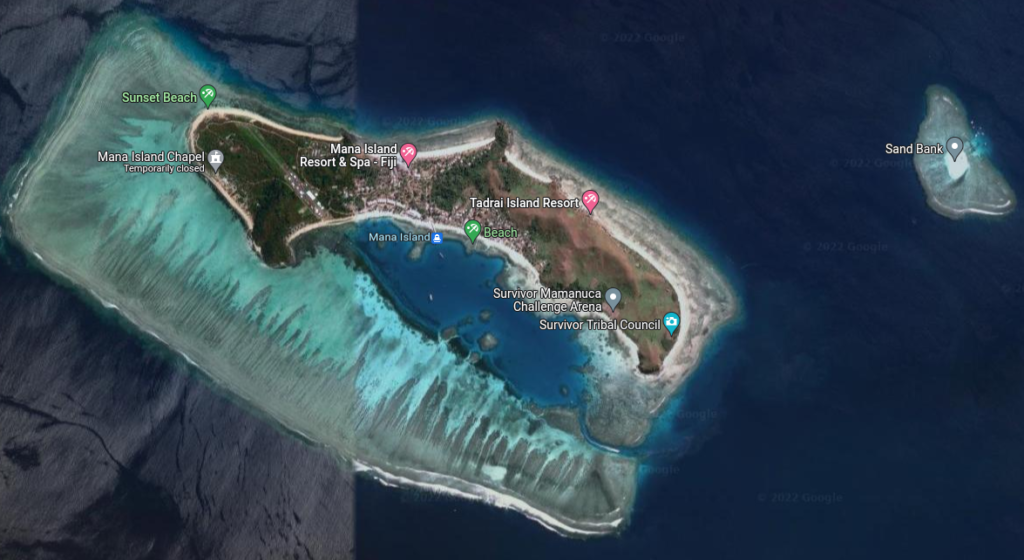
We went snorkeling at the south border of the lagoon and around the sand bank north east.
During our visit on Mana they closed off most part of the island in preparation of filming American Survivor (which, from how I read Wikipedia, then never occurred (respectively, a year later in 2021)). For this reason we couldn’t test the waters along the north coast.
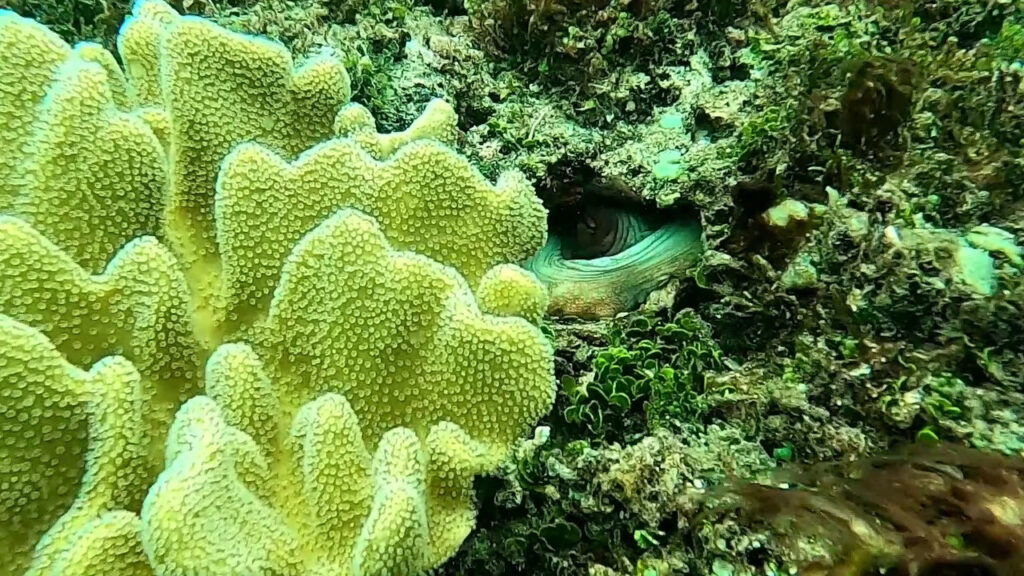
Sharks
Regarding diving with sharks, I have to mention the Beqa shark feeding. In the Beqa reef off Pacific Harbour on the main island Viti Levu, there are about three dive centers that organize shark feeding shows. And, yes, it’s a show, not really a dive ; -) .
These shows consist of two consecutive dives, about 40min each. You descend to the target dept, stay there kneeling or laying down behind an artificial wall, observe the feeding frenzy for a few minutes, then move up to another feeding station, and up again until you surface.
At each feeding station, the shark feeders either hand feed the sharks or let fish heads drop from a container. Depending on the depth, you’re going to see bull sharks, lemon sharks, nursery sharks, white tips, black tips, grey reef sharks, and if you’re particularly lucky there might even be a tiger shark (not our case…).
The experience is awe inspiring. Especially if, like us, you haven’t seen sharks throughout your diving and snorkeling career so far. You’re just a few meters (centimeters might be the more appropriate unit) from these magnificent creatures. Without a cage — though, guarded by the trained dive club employees.
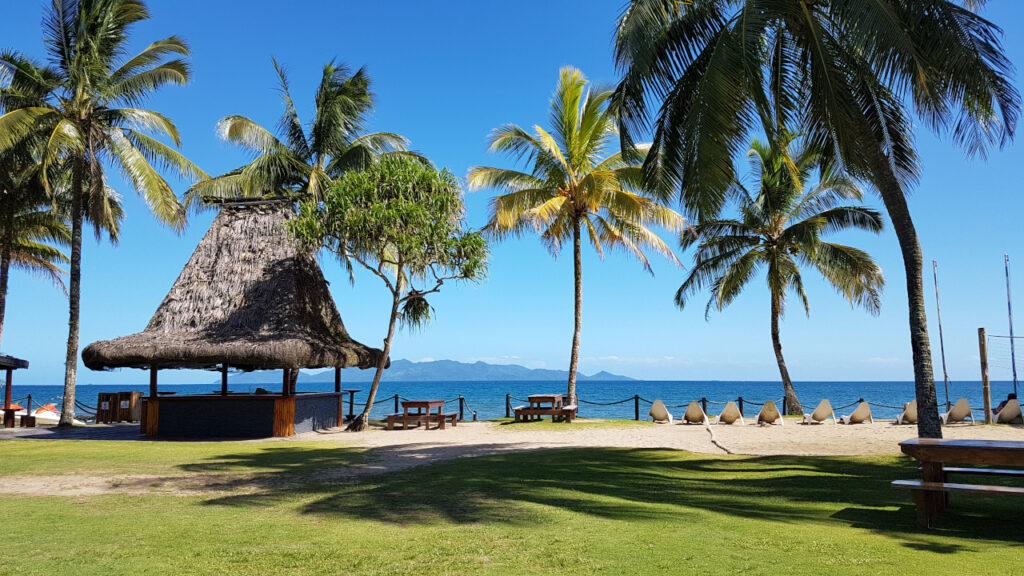
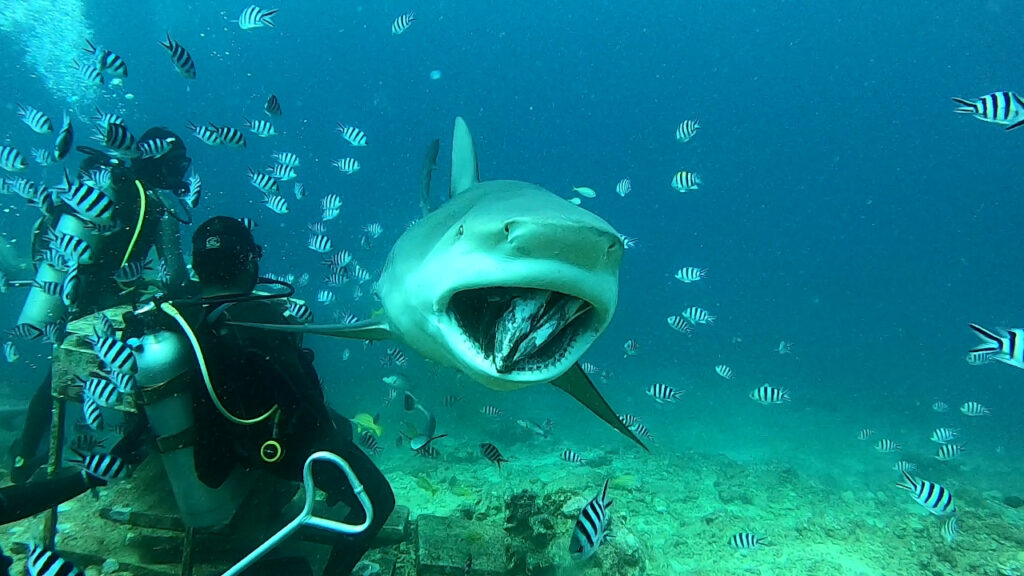
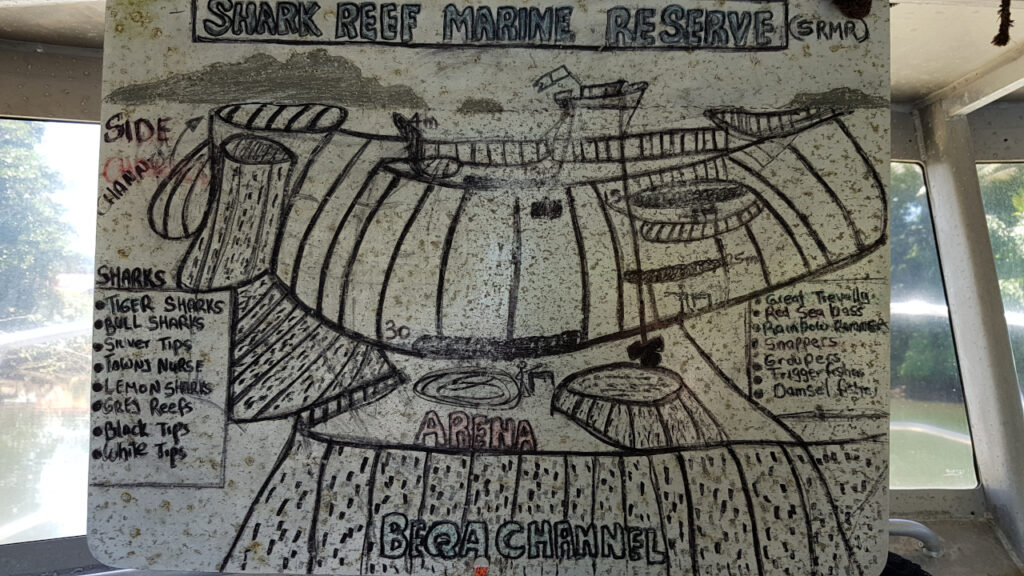
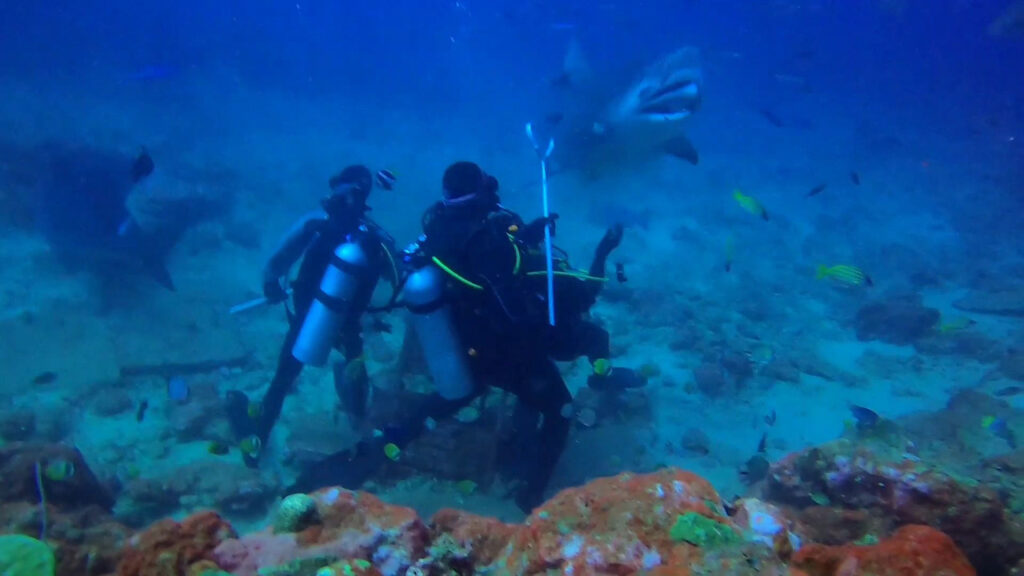
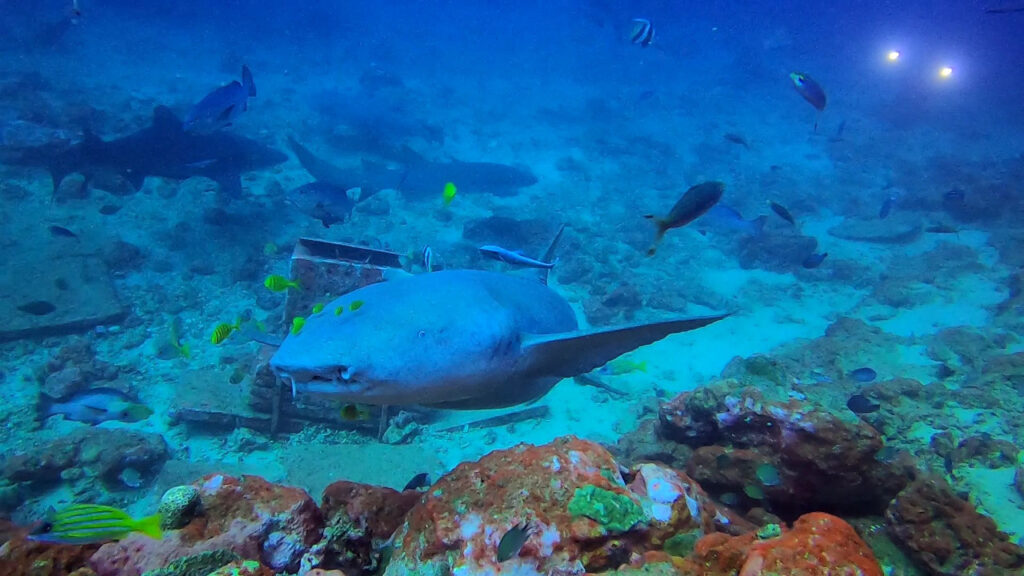
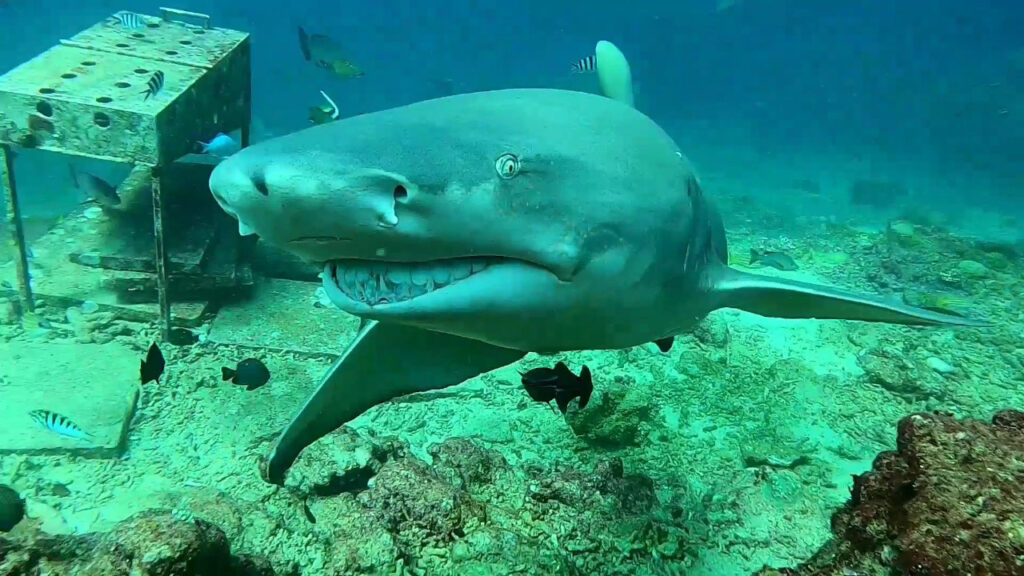
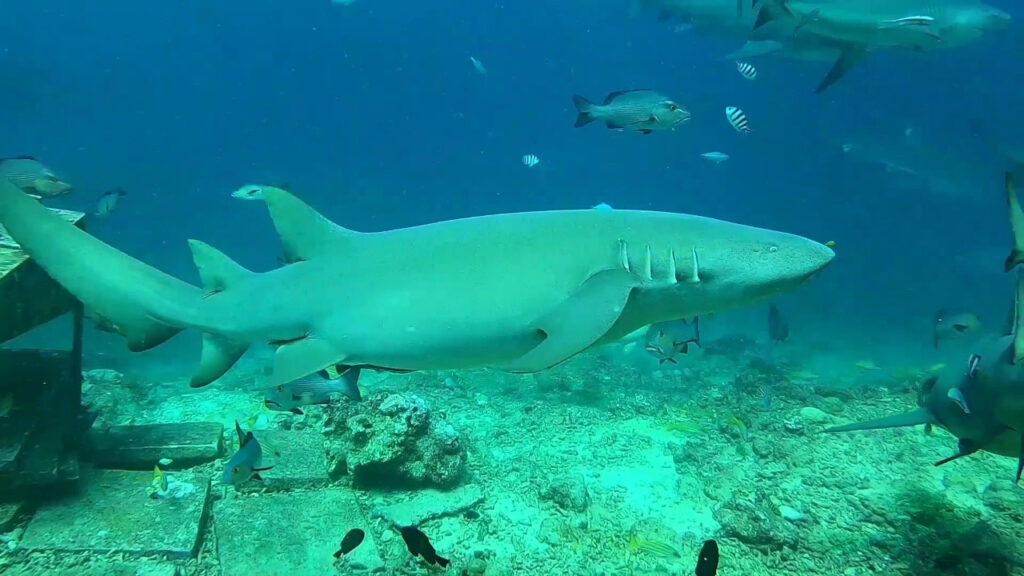
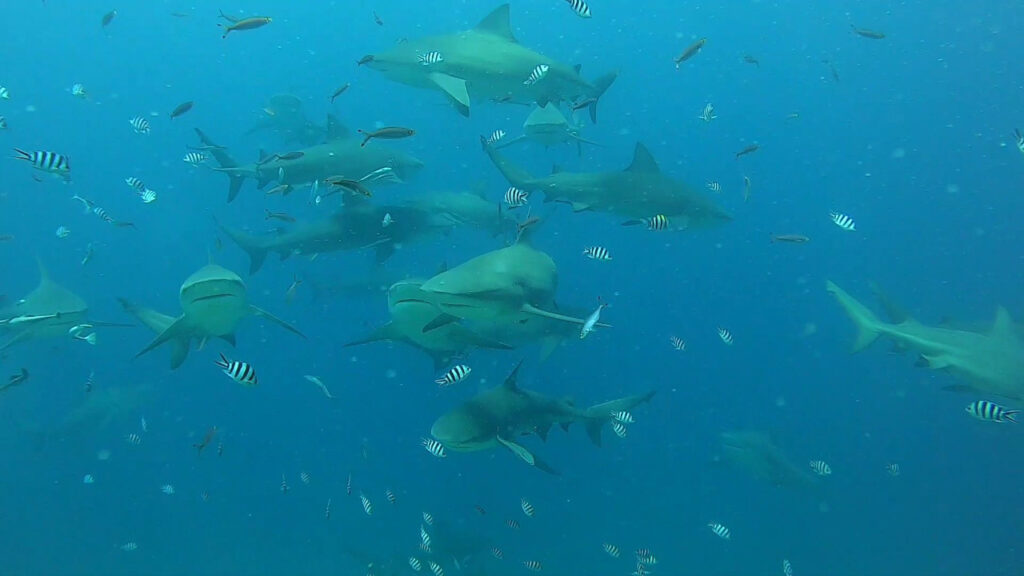
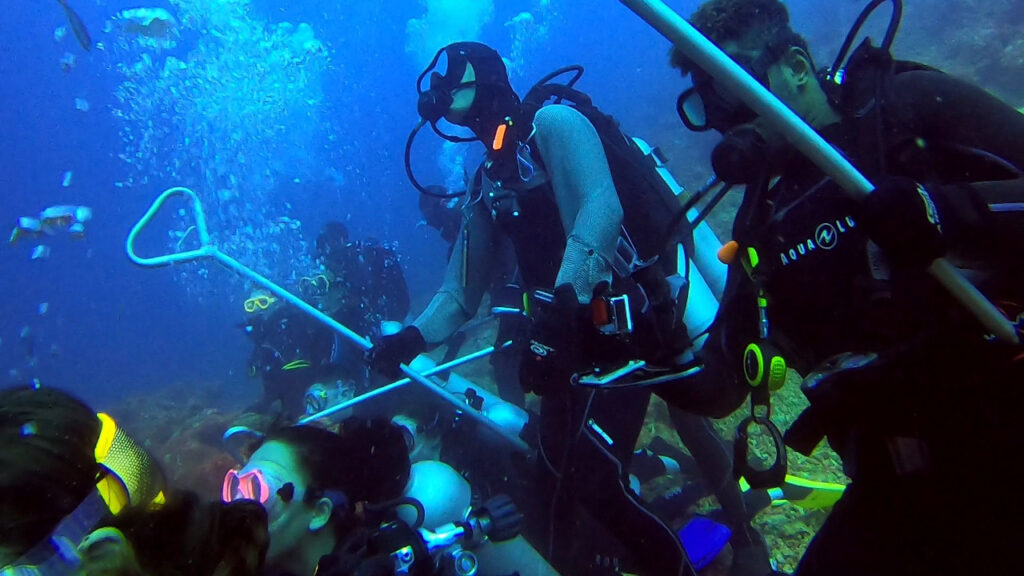
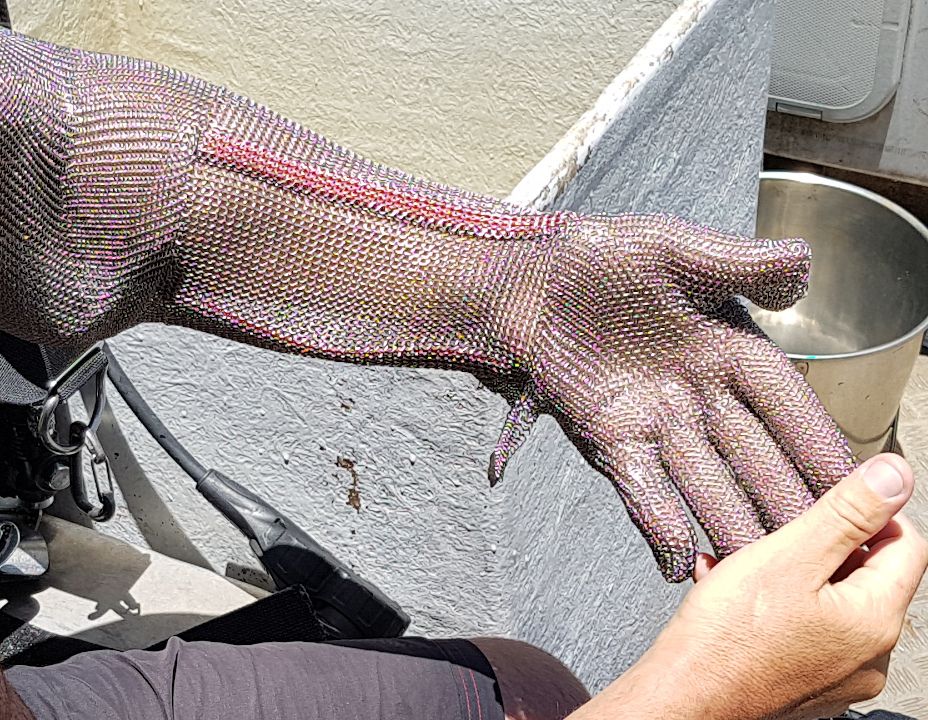
Transport
Transport in Fiji is surprisingly cheap. We took the public bus to go from Nadi to Pacific Harbor, that’s F$11 per person (F$14 to go all the way to Suva). There is supposed to be a bus schedule (the receptionist at the Pacific Harbor hotel showed us one), but regarding the times listed, you have to account for some fijitime and even if the bus departs in Nadi/Suva on time, the arrival and departure times in between these two end points will depend on the traffic load on that specific day.
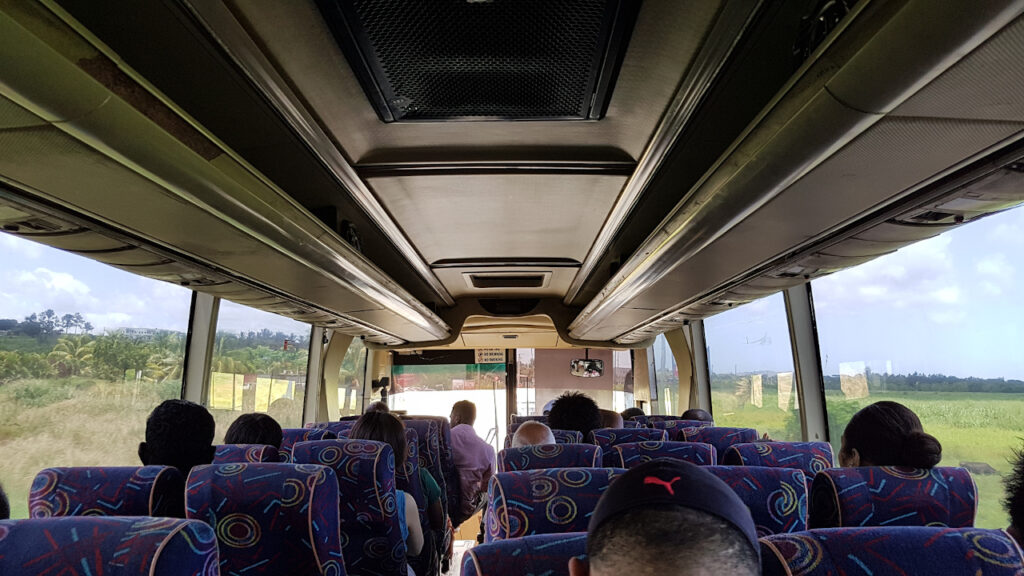
However, there are also smaller mini-vans running back and forth. They cost about the same as the buses. So, when you’re waiting for a bus, just signal the mini-vans as well (the ones with a “Suva” or “Nadi” sign behind the windshield, not every car is for hire…). If the mini-van isn’t full yet, they’ll pick you up and then drop you off with large flexibility.
We eventually took a mini-van to get from Pacific Harbor to Suva. And later on, when back on the main island to go from Suva to Nadi. This costed us F$17 per person (I don’t understand why they aren’t much more expensive than the regular buses). In fact, we got the ride right from the pier: the driver waited for passengers getting off the ferry and asked us whether we needed a lift to Nadi as well.
We first declined because we wanted to buy some groceries, and some kava roots before heading to Nadi. but they immediately told us, that’s not a problem: they can stop at a grocery store, and a kava shop. some of the other passengers also got some groceries, and thanks to the extra stop we didn’t have to find out by ourselves where to buy kava from, they knew a good address.
All of this for a low price and best imaginable efficiency! In short, the buses and mini-vans in Fiji were a very pleasant experience! (Seriously, I cannot underline this fact enough, after many not-so-overwhelming experiences elsewhere; I’m looking at you Laos)
The taxis were a pleasant experience and reasonably priced as well — apart from one crazy guy in Nadi (who tried to detour in direction of the hindu temple at every cross road and round-about, and which we had to rectify thanks to a local SIM and Google maps…). For example, for a ride between the municipal market and Goundar Shipping pier in Suva we payed F$5, metered.
Ferry between Suva and Taveuni (respectively Savusavu)
To get to Taveuni one can either take a plane or the ferry. The plane gives the most flexibilities, while the ferries represent some significant constraints.
For various reasons we didn’t want to take a plane, so we looked for ferries. Essentially, there are two options: a big boat from Suva through Savusavu to Taveuni, or two separate small boats plus an overland part on Vanua Levu between the jetties. The big boat option has only two connections per week, while the small boats go daily-ish.
To us, the small boats looked like too much of a logistical challenge. This, plus we wanted to visit Taveuni, not so much Vanua Levu, so, we opted for the big ferry.
http://www.taveuni.com.au/services/ferry.htm
The big ferry out from Suva leaves at 6pm-ish to arrive in Savusavu around 7am before it goes on to Taveuni. (As mentioned already elsewhere, if you happen to find time indications about something-Fiji (including this blog), account for fijitime: don’t plan ahead but improvise in the moment.)
On the ferry, the locals have figured out one special unwritten rule for the night passage: you’re not interested in the tables or seats. It’s all about the real estate on the floor; way more comfortable to sleep on.
So, here it goes: get on board, put a blanket on the floor to signal your territory, and then slowly expand it. Take in the chairs, maybe a table … all until you hit the territory of a neighbor. Though, the chairs and table naturally delineate parcels. Hence, to take them over, you wait until someone moves or looks away for long enough. Then casually put a bag on it! All with a smile on the face and no conflict. It’s like a multiplayer version of real life go… Ah, the joys of travel.
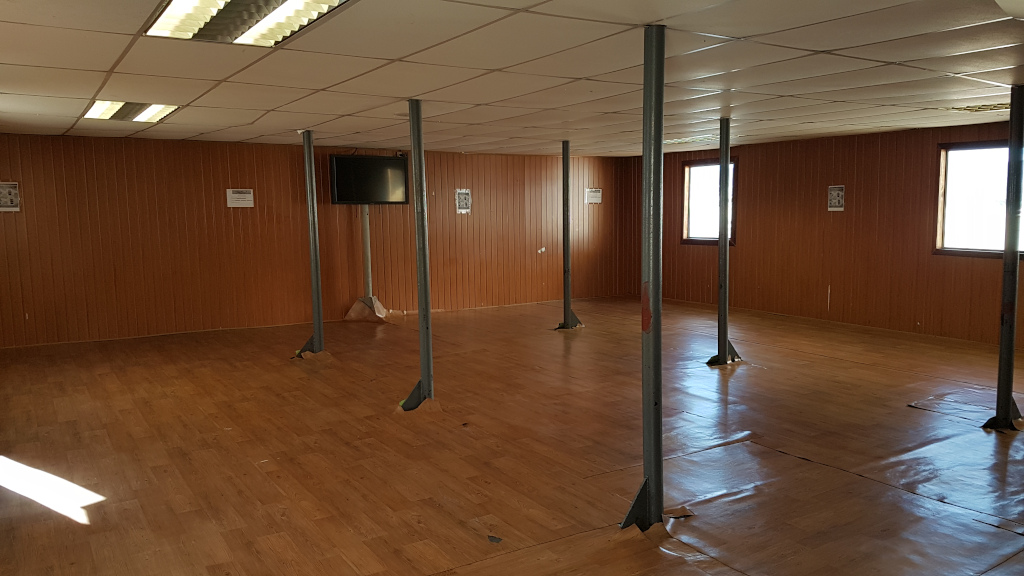
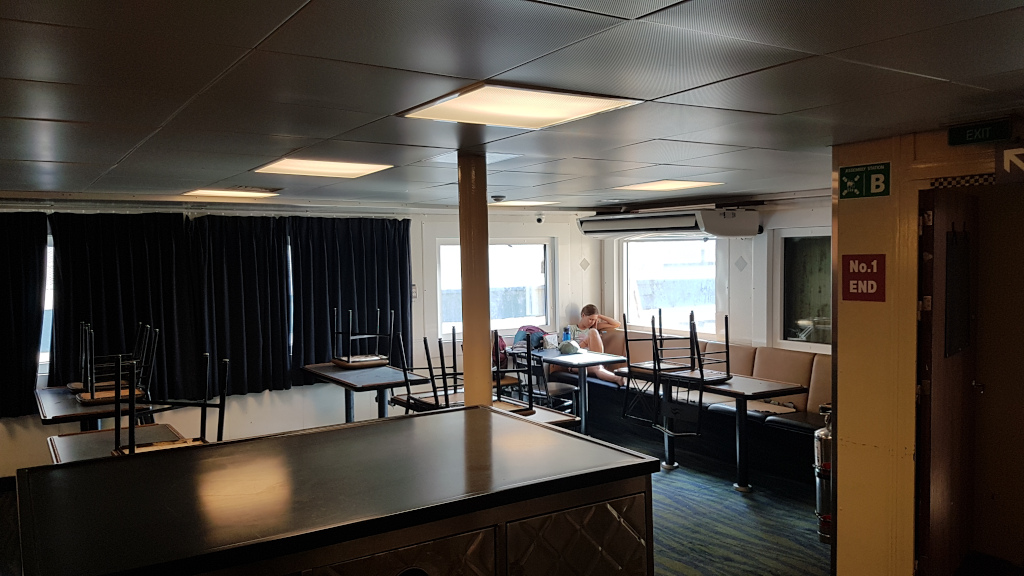
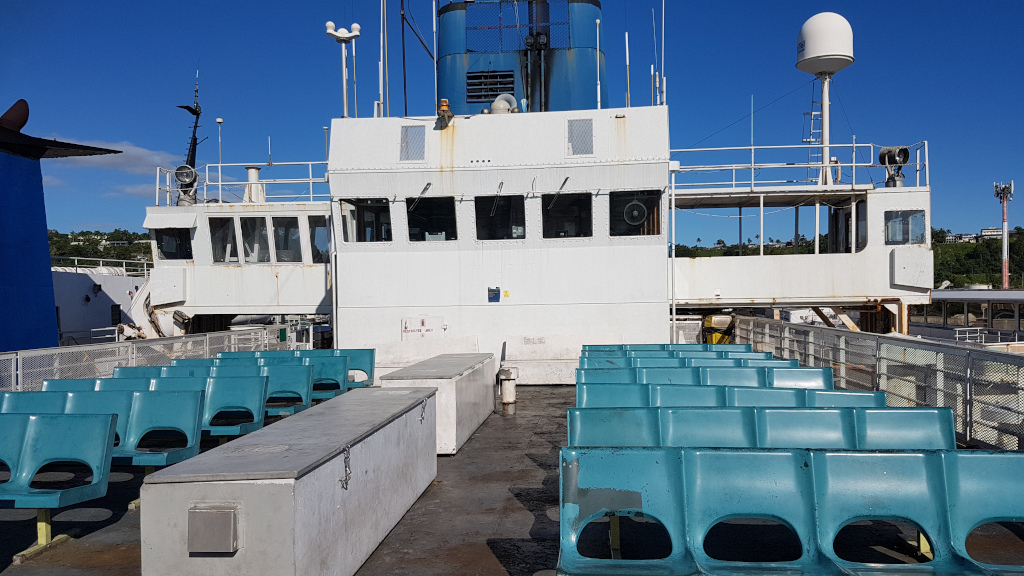
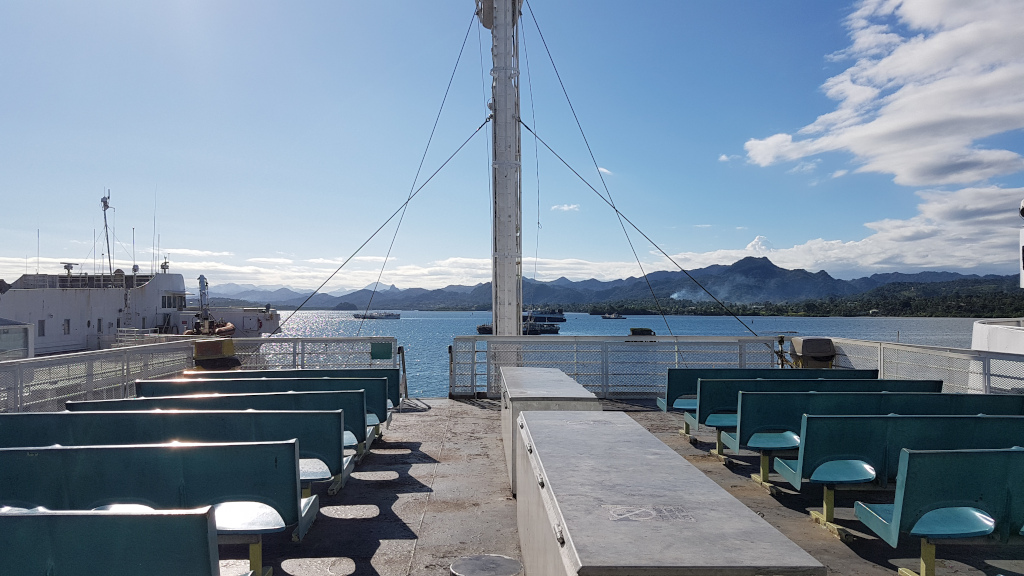
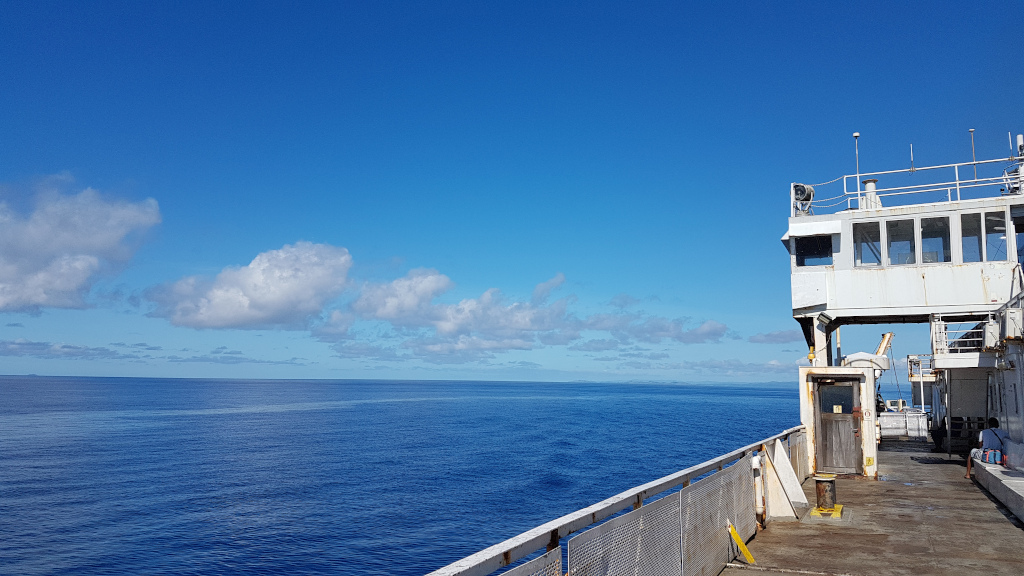
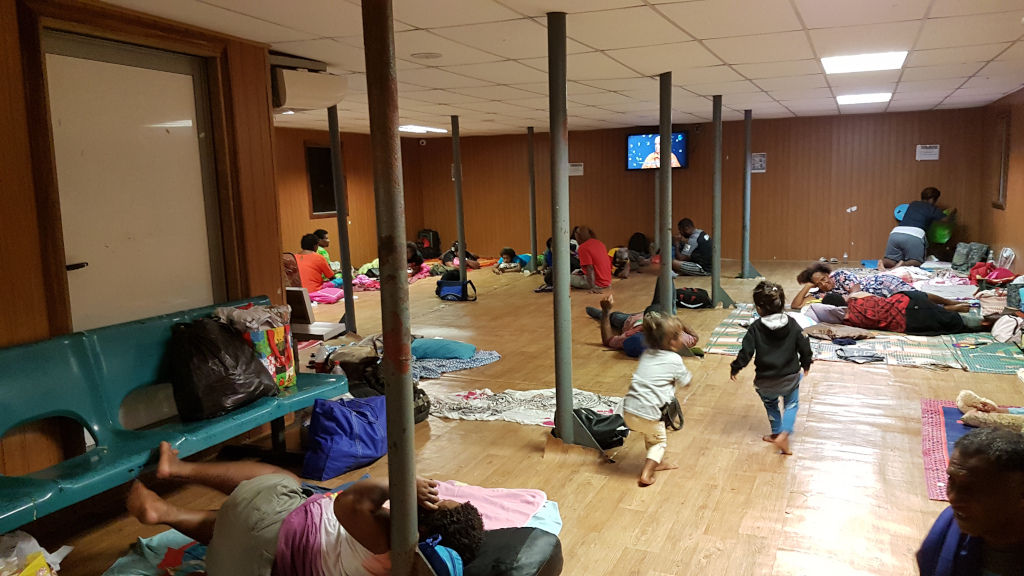
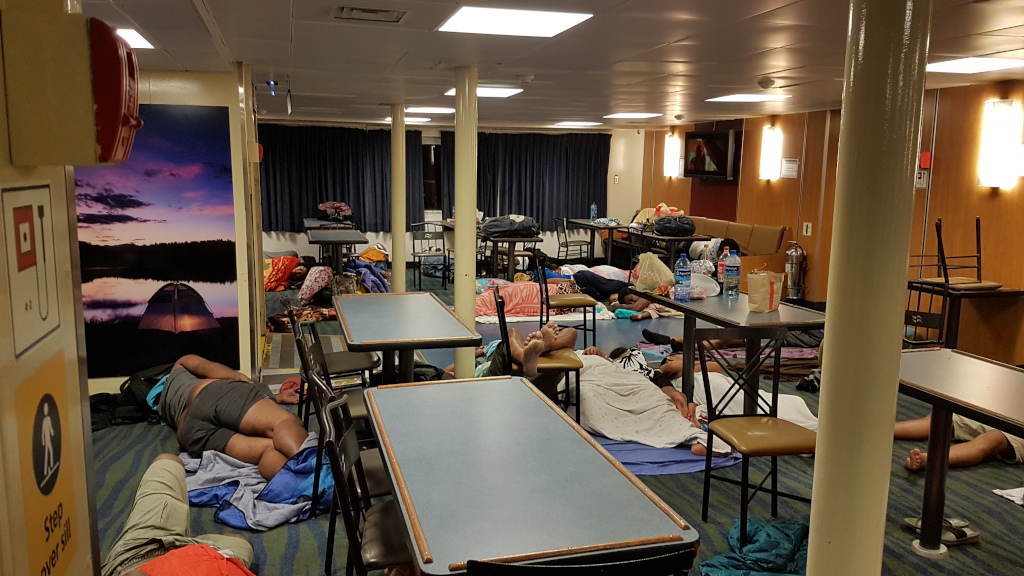
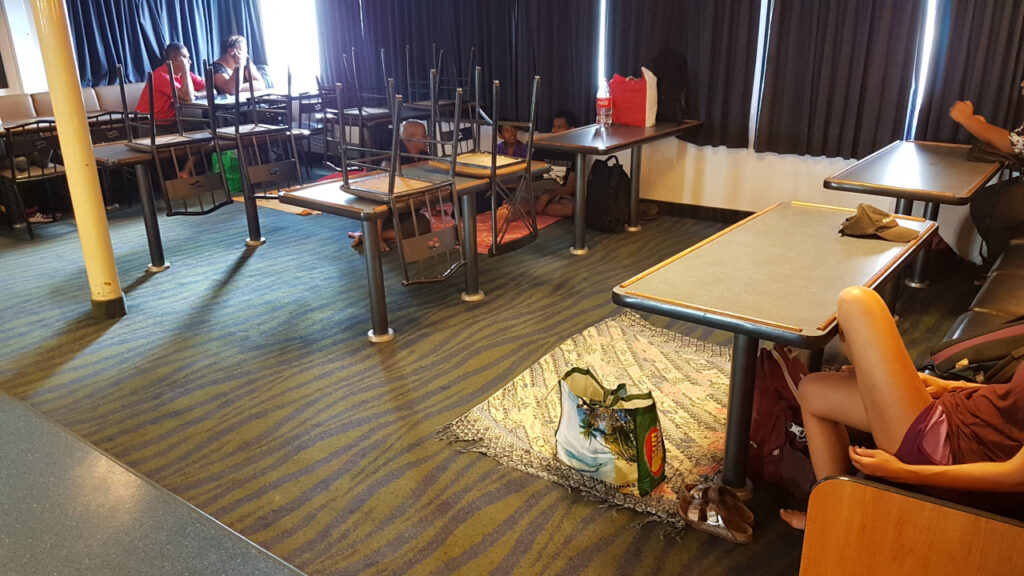
From a practical point of view regarding the ferry, there is a regular schedule running twice a week (Monday and Friday) from Suva to Taveuni, via Savusavu. The return trip Taveuni to Suva is on Tuesday and Saturday. The webpage of the operator (Goundar Shipping) doesn’t exist anymore (?!). But there are enough tickets, and they can be bought at the pier in Suva, or on the ferry itself when boarding from Taveuni. The fair is F$65 per person per trip.
Boarding is at about 4 pm in Suva, and at around 1 pm from Taveuni. In reality (our concrete case as example), we left Suva at 7:40 pm, arrived in Savusavu at 7 am, left Savusavu at 8:30 am, and indeed arrived in Taveuni at 1 pm the following day.
On the trip back, the ferry was late to reach Taveuni; it arrived in Taveuni only at around 2:15 pm. We could by a ticket at around 2:45 pm, but real boarding wasn’t until 3:15 pm. We eventually left Taveuni at 5pm, left Savusavu at 10:45 pm, and arrived in Suva at 10 am the following day. yet it took until 10:45 am to get off the boat.
The scattered timestamps are in line with what we’ve seen other travelers reporting. And having been on the ferry, it’s clear why there are large uncertainties in the scheduling. Boarding and unloading, for example, take ages: for one, there is Fijitime, so the locals aren’t stressed.
Second, there are several families who wait until everyone else has left (i.e. until there are no cars and trucks in the cargo zone anymore, and also the foot folks have left, lest they’d be in collision course with incoming cars). Then a family member boards the ferry with their pick up van, in which they then load their luggage and eventually leave.
In other words, the first cars getting on the ferry aren’t actually getting on. They pick up and leave again before the real boarding starts.
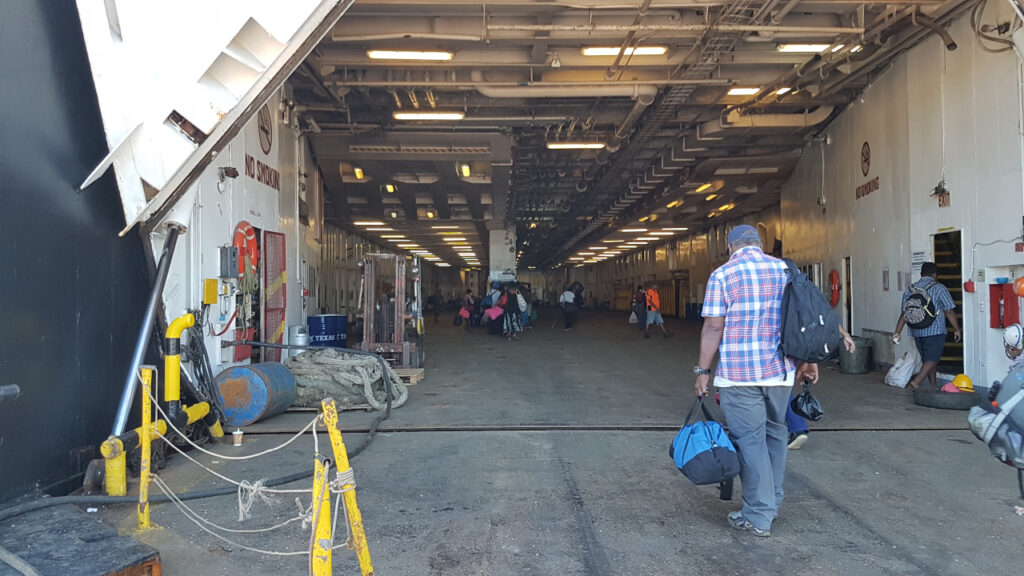
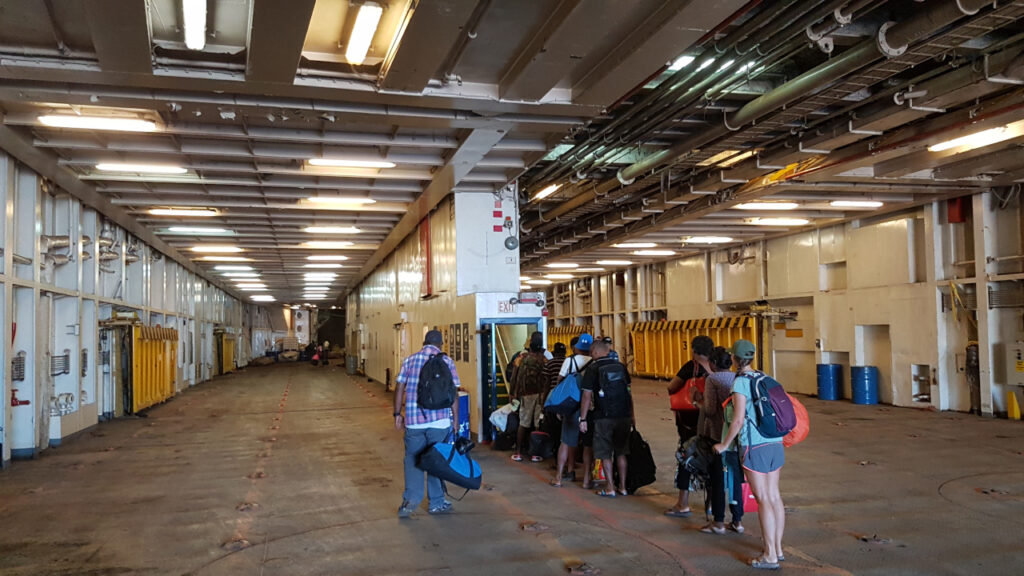
Private boats and Sea Bus in the western islands
To get to places in the mamucan and yasawas islands we had to hire private boat rides. Within the yasawas the Sea Bus is very efficient and fairly priced. To get from Mana island (belonging to the manican island group) to waya lailai (in the yasawas), we organized a pickup by the host family. The trip from Nadi to Mana we scheduled with the hostel.
These western islands are protected by a large lagoon. This lagoon is beautiful to see from the top of a hill (or the satelite images on Google maps). But they also bring along a slight inconvenience. Within the borders of the lagoon, snorkelling isn’t interesting; life happens at its edge. And to get there (several 100s of meters to 1km off shore) you have to hire someone with a boat.
These “private” boat hires depend on how many other people are interested in a trip. And on how many _have_ been interested the past week. Because if American Survivor happens to be filmed on Mana, which closes off the island, the few tourists who are there despite the filming (*) are precious, which means going out for only two people may suddenly make sense nonetheless…
(*) or, for example, simply because they didn’t expect such a show to be filmed on one of the most touristy islands, and thus didn’t inform themselves on when not to go.
I somehow didn’t take any pictures of our Sea Bus trip in the Yasawas. But this kind of describes it well: nothing spectacular happened, it’s like a bus ride in a (well working!) public transport network. Anyway, for anyone interested in the Yasawas, check out the webpage.
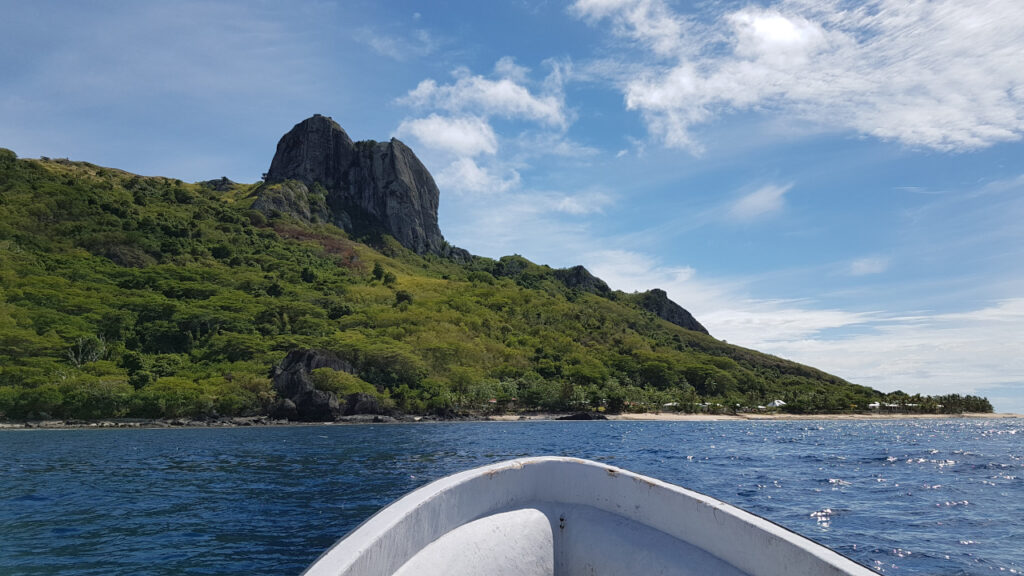
Fijitime
For closing, here some more uncategorized information and photos, approximately in chronological order with respect to our itinerary.
Slave history
If you haven’t heard about this yet, then you’re going to be surprised at the number of Indians in Fiji (though, mainly on the main island and hardly on other places). You see, on Fiji you can grow sugar cane. And like everywhere else, sugar cane means you need … employees. So, some smart people went to India and lured the people to come “work” in a place called Fiji. By the time those poor souls understood everything was empty promises, they were trapped. Nowadays is several generations later and as such a simple reality.
Taveuni
During a conversation while in Lavena loge we asked “where is your favorite place in Fiji?”. “Home,” was the answer, “because here everything is free. When we go to another place we have to pay for the housing, for the food.”
This was an interesting concept: in their home village everything is “for free”. The water is free as it is the collected rain. The fish is free because they’re abundant just off the beach. The cassava is free because it grows just there in the earth.
For us, back home nothing is free. The drinking water comes with a utility bill. For food, we have to go and buy, even if some of the vegetables come from the own garden, this doesn’t come “for free” either. This notion, this way of thinking is somehow very foreign to us; and yet understandable.
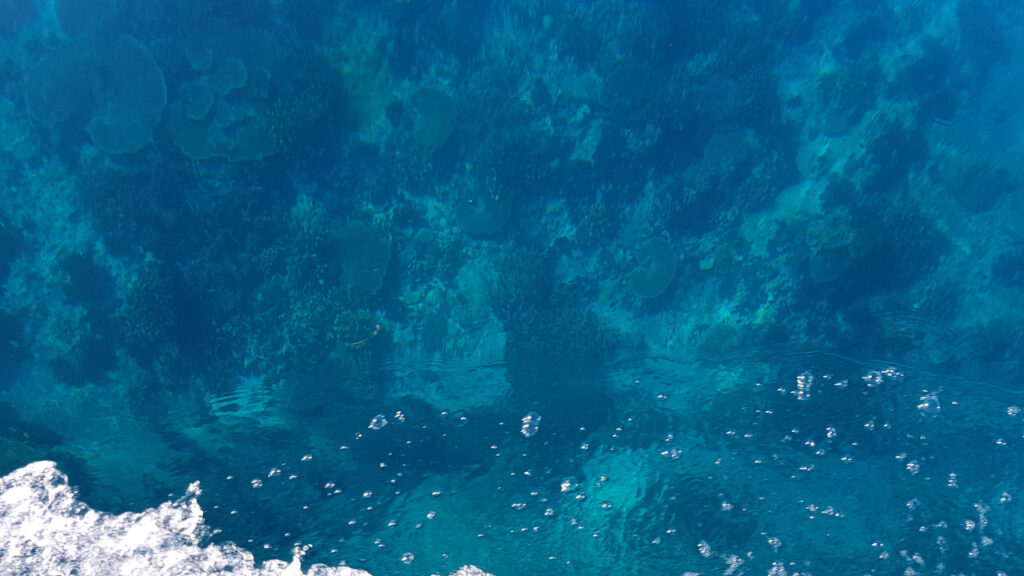
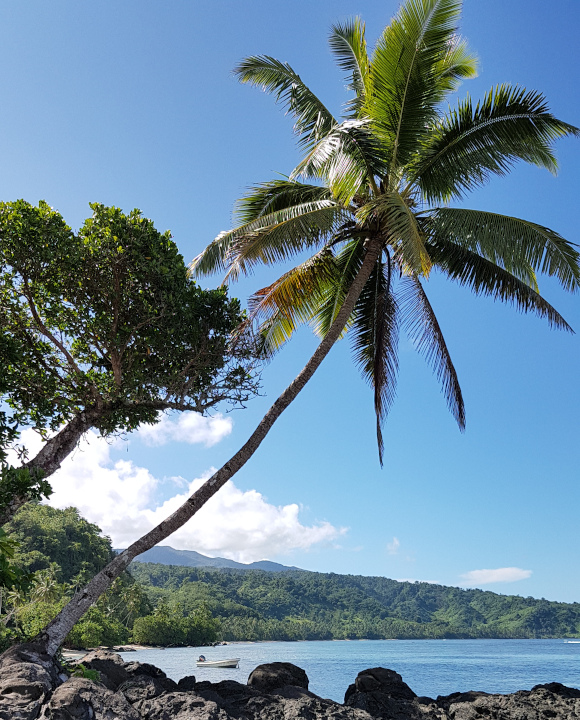
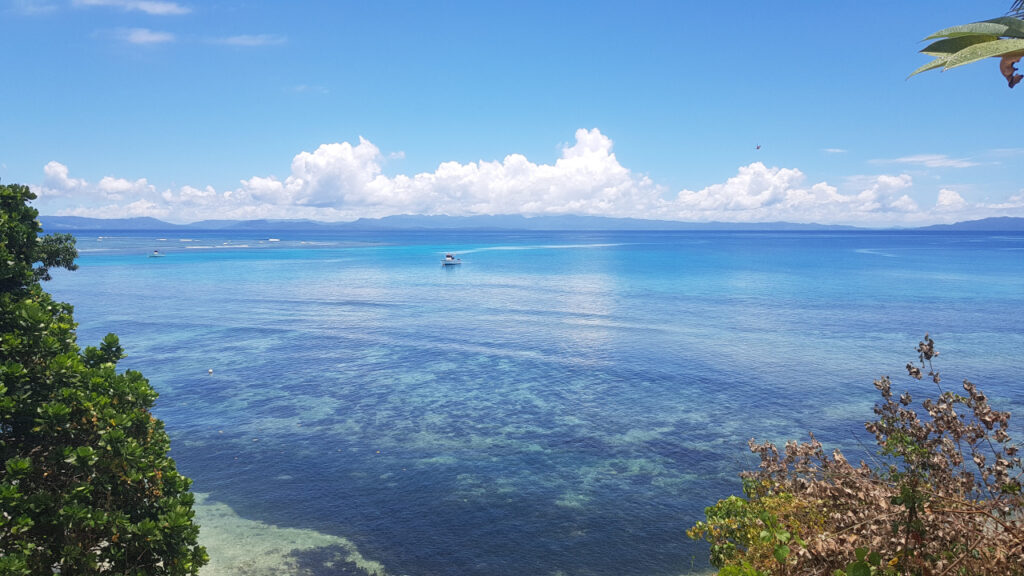
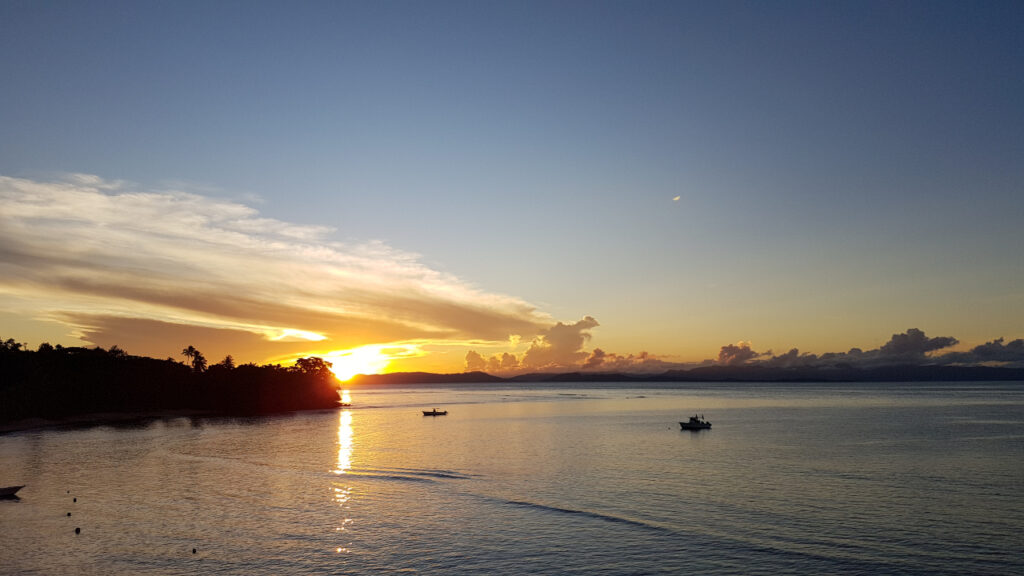
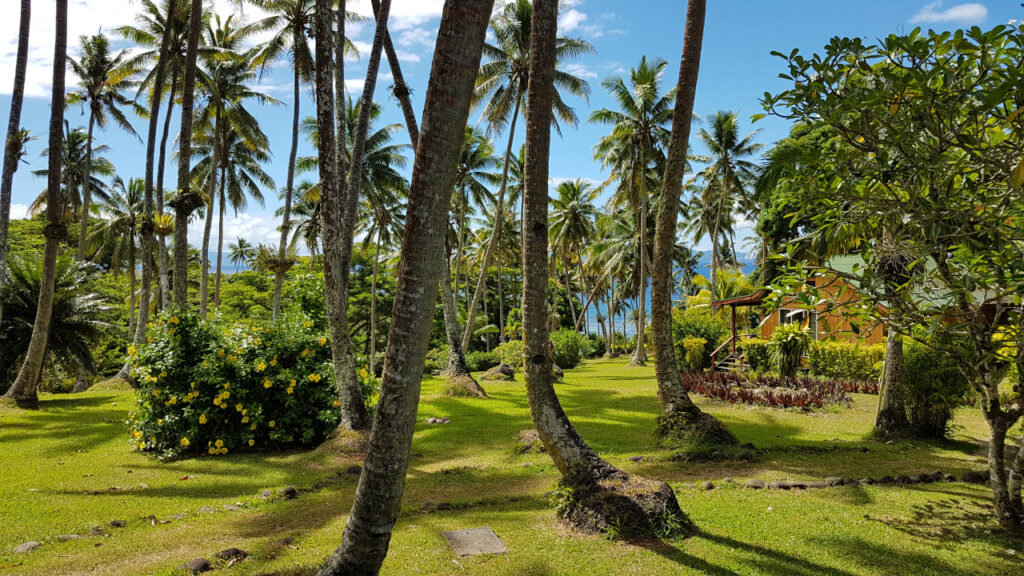
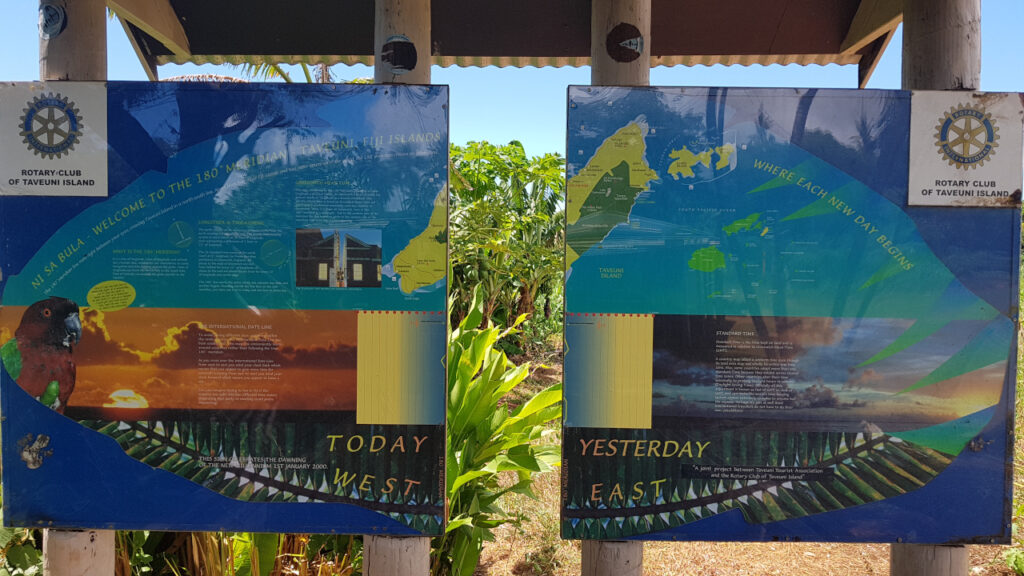
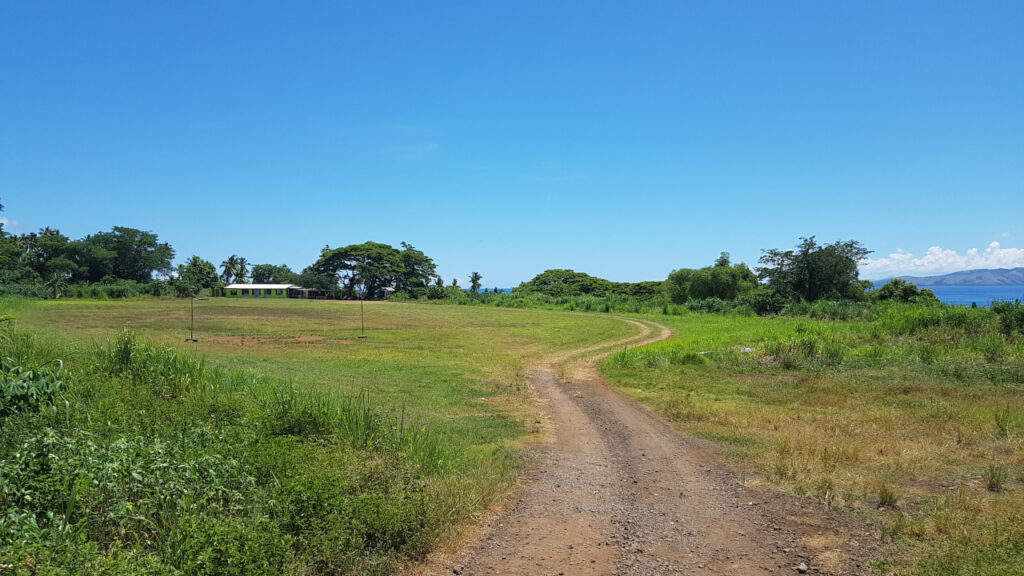
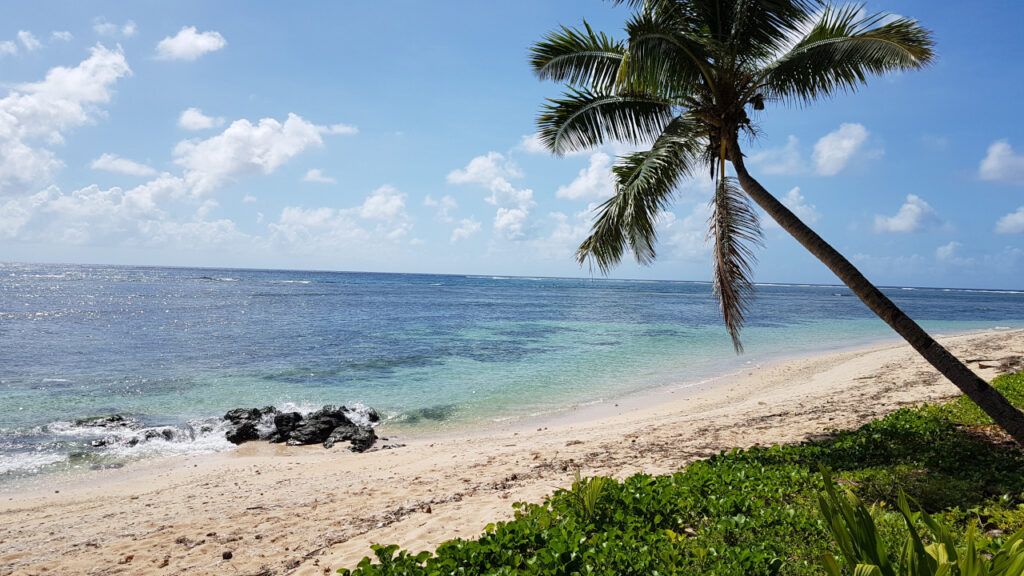
Mana island
Mana is a very touristy island, quite close off the main island. For this reason we were (still are, thinking back) surprised to learn that American Survivor was about to be filmed there. Well, whatever, apparently some places are restricted, but it will still be worthwhile the visit.
… in fact, the “a bit restricted” was an understatement. The island is closed and we weren’t supposed to leave the premises of our backpacking place (I mean, the people of our hostel didn’t care, but the employees of the big resort complained that we dared walking along the beach). Eitherway, we could go snorkeling outside the lagoon and at the sand bank, as well as visit Monuriki, the “Castaway” island, at a discount.
Additionally, we represented the last two tourists for our backpacking hostel because after us the whole island gets indeed completely closed for the filming (hindsight: or not, covid hit and they had to postpone filming a year). And because of this circumstance, they organized a last big feast for the employees (and happenstance allowed us to benefit).
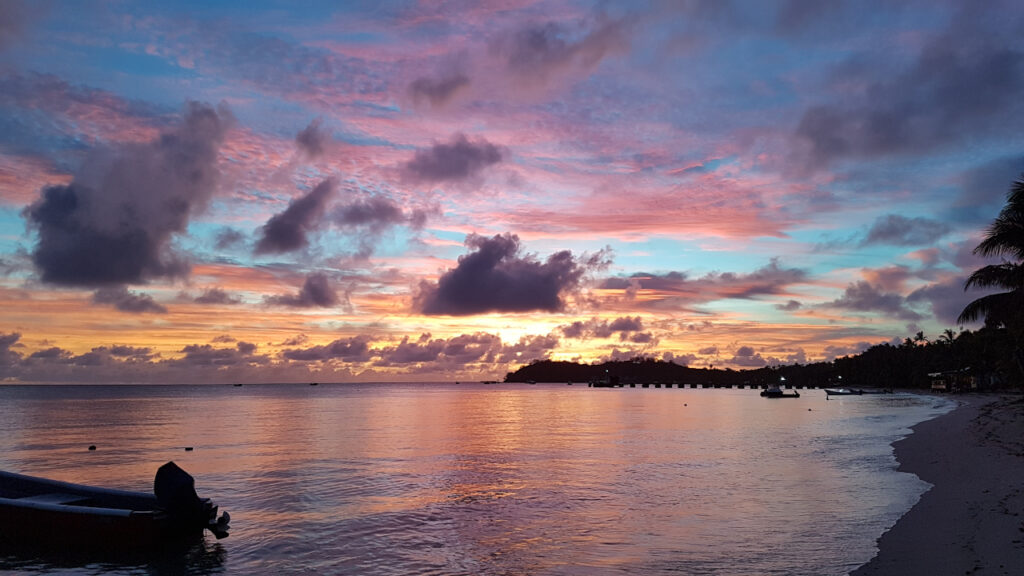
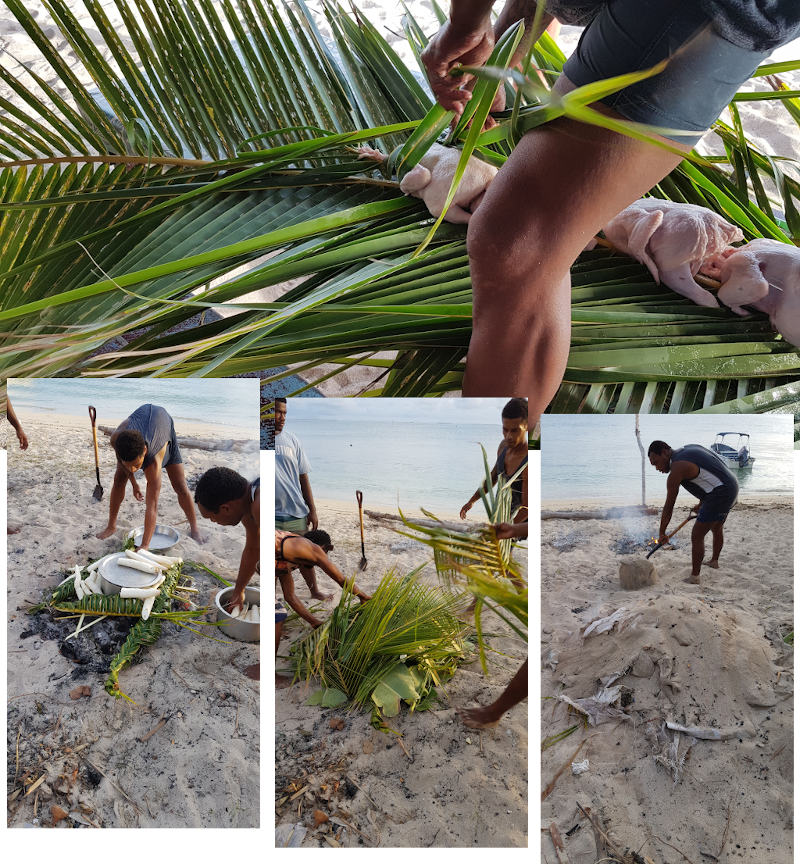
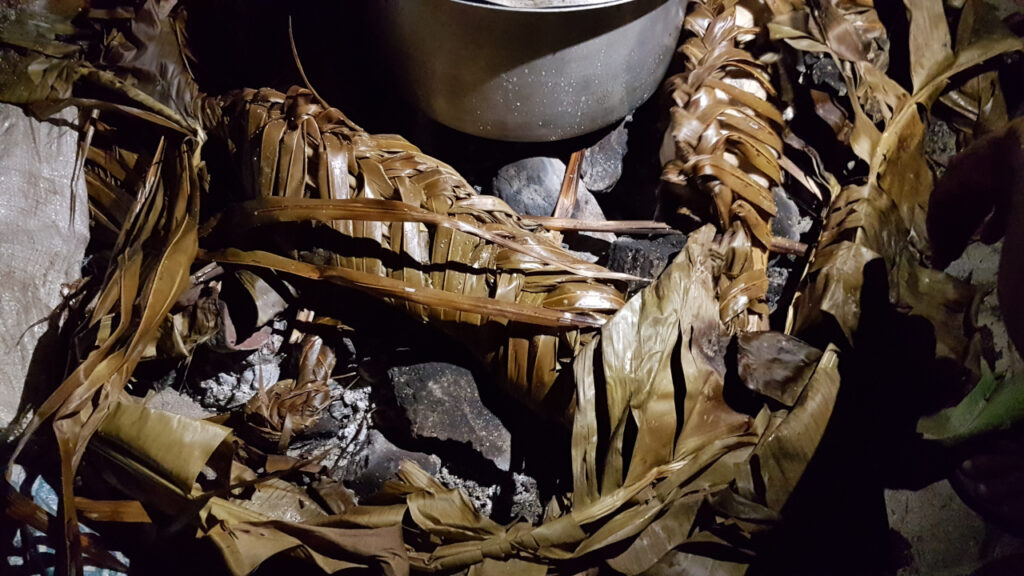
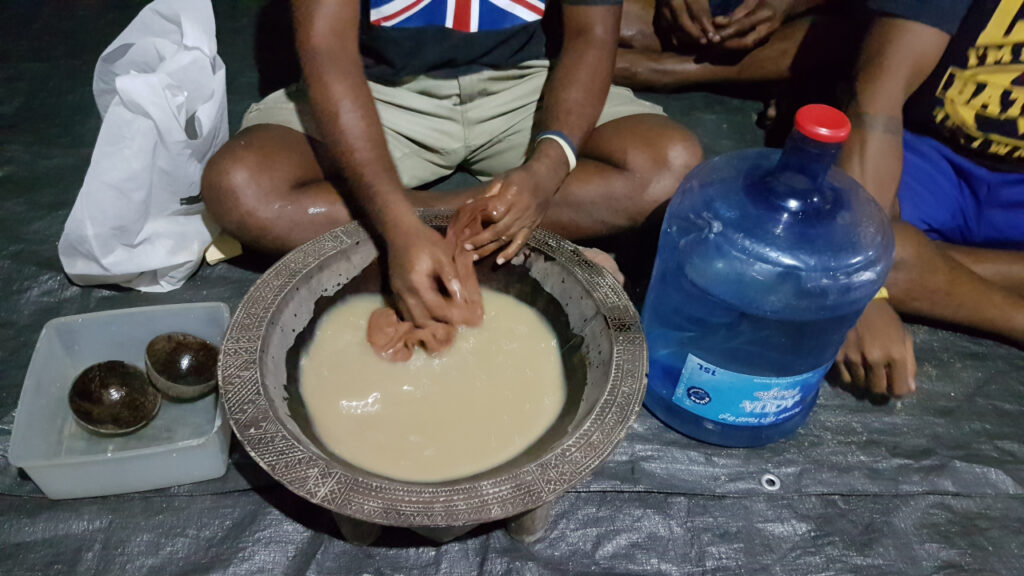
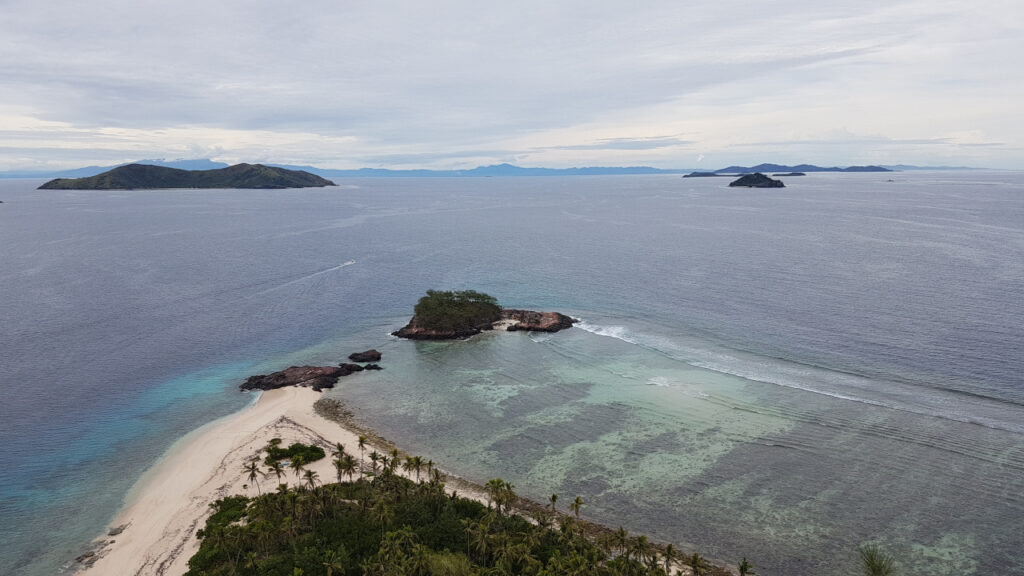
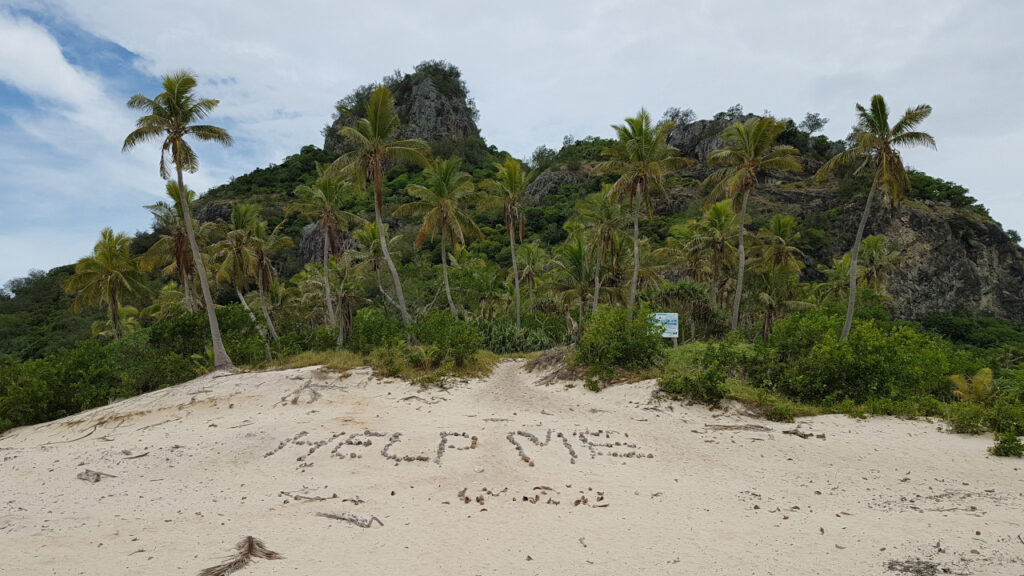
Yasawas
In the Yasawas we’ve learnt that Fijian culture is patriarchal. It is accepted and there are rare cases in which the woman goes out to work and the man stays home and tends the house work. But to represent the family in a counsel of the village, it’s the oldest son who goes when the father isn’t around. Even if there are 7 older sisters in the house.
Another quirk that we’ve learnt about is that boys have to plant a garden when young. Because to marry they have to be able to present their ability to feed a family with a garden. This, of course, means the boys “stay” home and the girls move out. I didn’t ask for clarification whether this is a local Yasawan custom or whether this was also the case on, say, the main island. Nor did I ask how they manage the real estate with a growing population given the islands aren’t particularly large.
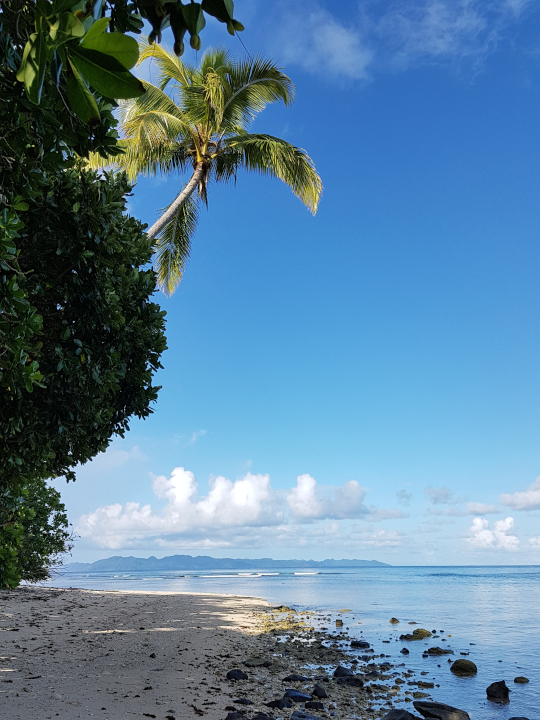
More underwater photos
